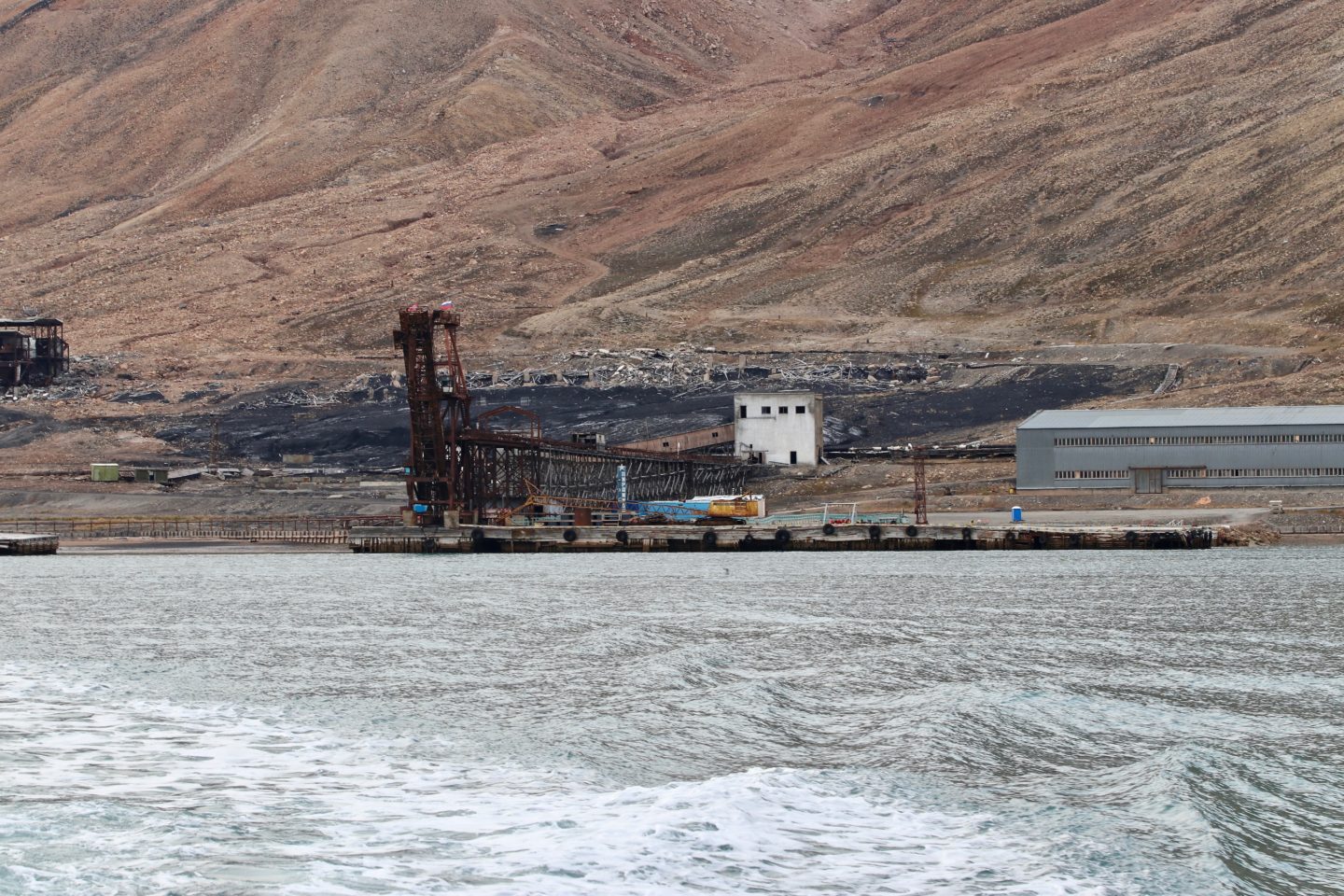We disembarked MS Expedition in the morning after 11 AH-MAY-ZING days circumnavigating Spitsbergen. That’s an experience I will not forget so soon. Check out my post, Summer in Svalbard: Circumnavigating Spitsbergen if you’re interested to read about that adventure or my other posts on Svalbard, Svalbard: 10 Things You May Not Know and Longyearbyen, Svalbard: Summer in the High Arctic. Our flight back home won’t be until past midnight. Effectively, we still had one full day. So, we hopped on another boat. This time to Pyramiden.
We took the fast catamaran. The whole trip took around six hours: two hours to get to Pyramiden, two hours at Pyramiden and another two to come back. I have been at sea for the past 11 days so the journey wasn’t as exciting. If it’s your first time, the whole trip would be the highlight, the journey included. Not only is the scenery beautiful and I bet, nothing close to what you’ve seen before, along the way, you may spot many wildlife too.
A view of Nordenskiöld glacier near Pyramiden…
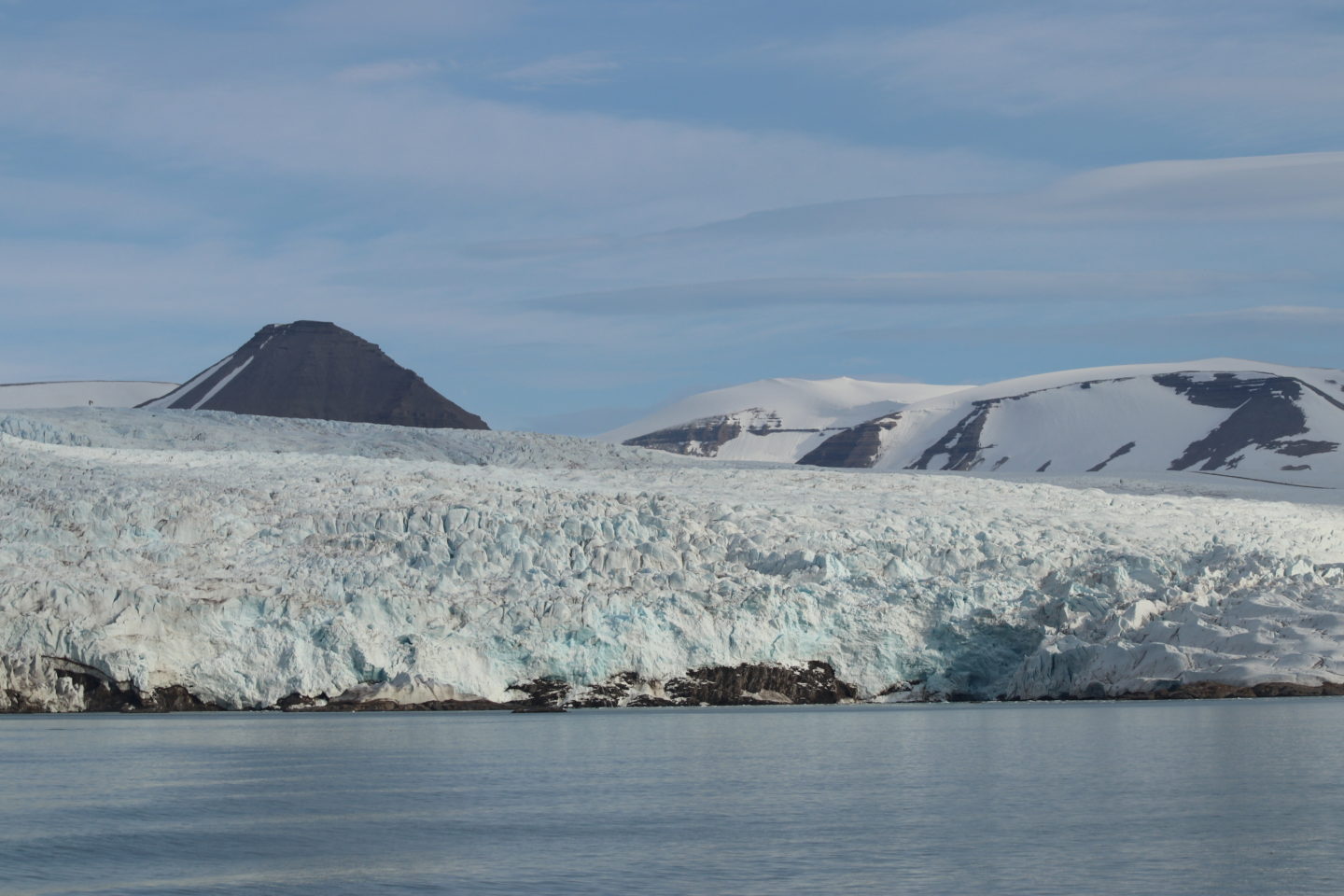
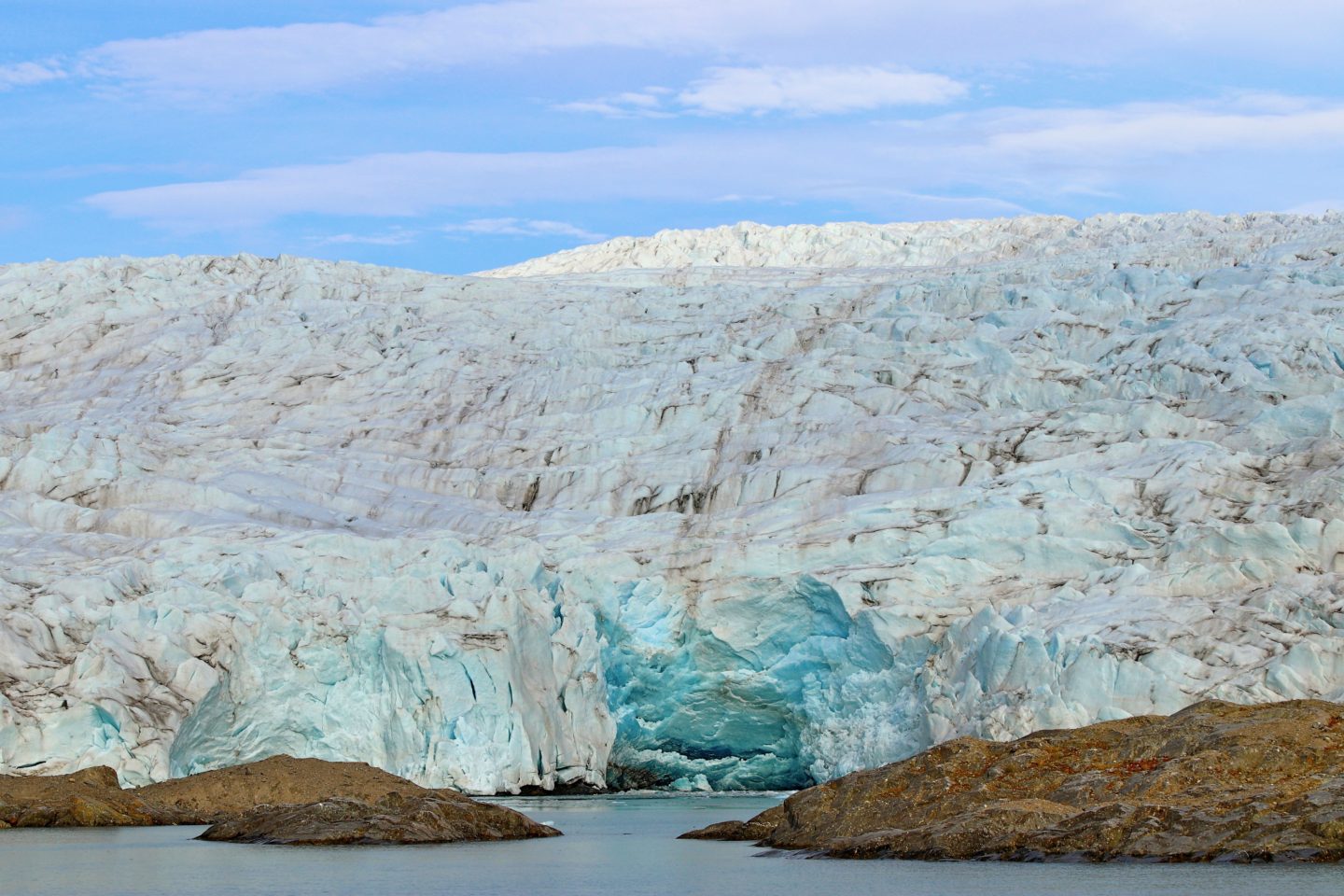
I didn’t sleep much the night before and was sleepy so along the way, I napped. When someone squealed with excitement at the sight of a few Arctic reindeers, I didn’t even bother to open my eyes. But at the first mention of polar bears, I was out of my seat and on deck, camera in hand.
We saw three more polar bears, again, another Mama and her two cubs. These took the toll to seven polar bears sighted! (Something must be done about the litters on the beach though!).
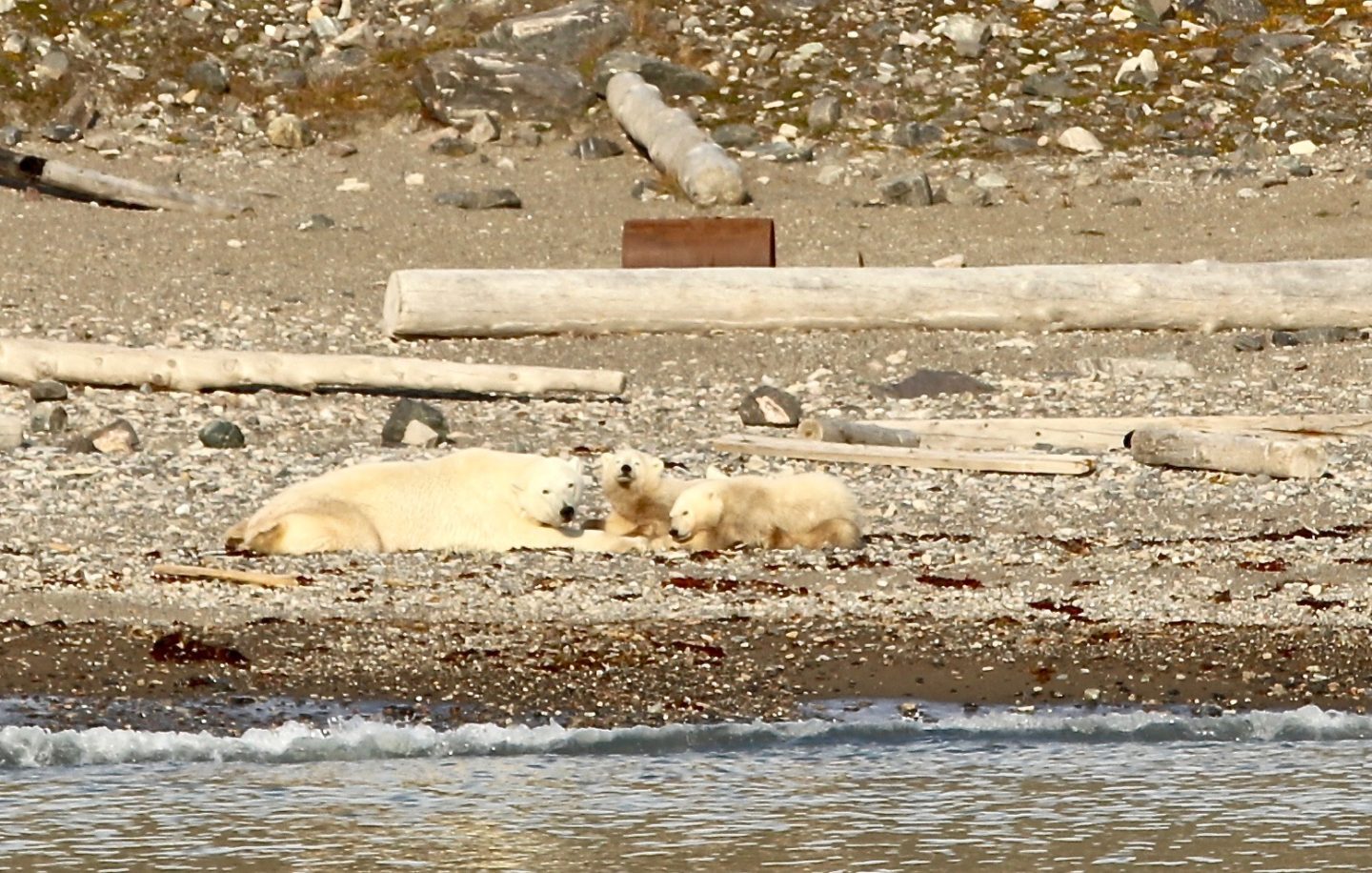
We lingered for a few minutes before making our way to Pyramiden.
A SOVIET MINING TOWN HIGH ABOVE THE ARCTIC CIRCLE
Pyramiden lies high up above the Arctic Circle at (almost) 79°N. Even though the Soviets claimed its at 79°N, in actual fact, it’s a few degrees shy from actually being 79°N.
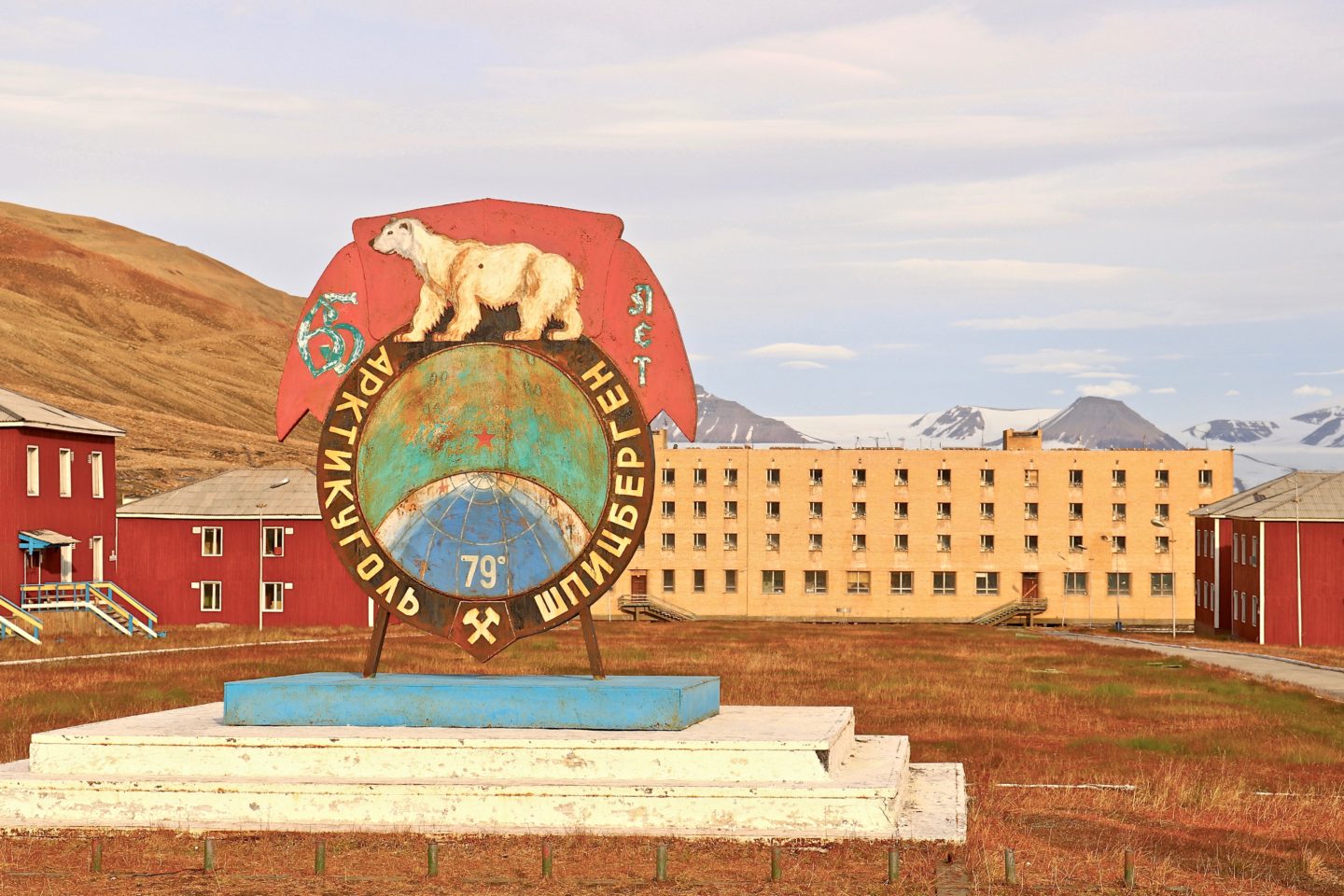
Why is there a Russian mining town in Svalbard, an archipelago that is under the Norwegian sovereignty? Well, the Svalbard Treaty of 1920 meant that citizens of all signatory countries, Russia or then the Soviet Union included, could live and conduct commercial activities in Svalbard.
The Soviets took advantage of this treaty to have a Soviet foothold outside of the Communist Soviet Union.
To entice people to come work in far flung Pyramiden, the package was made very attractive. To get an offer to work in Pyramiden was a privilege on its own and considered as a promotion. For the workers, they could live in Pyramiden for free. On top of that, salary-wise, it is said to be up to seven times more than the Soviet average. People who came here, came here for the money and nothing more. They knew they were not moving here for good. Most were on a two year contract.
A SHORT HISTORY OF PYRAMIDEN
It was the Swedes who founded Pyramiden in the 1920s. The name of the town originated from the Latin word “pyramide” meaning pyramid which is what the mountain opposite the town looks like.
Shortly after its establishment, in 1927, the town was sold to the Soviet Union. The Soviets kept the name but in Russian, the town’s name is pronounced as Piramida.
At first, Pyramiden was a sleepy town with hardly any residents. Only after the World War II did the Soviets allocated more money to the development of Pyramiden. The construction of dozens of buildings started including a hospital, a large canteen and a recreational centre called the Cultural Palace. These buildings were constructed in the typical Soviet-block style but with rounded edges to lessen the impact of the cold winter winds. With the closed door policy adhered by the Soviets, Pyramiden was used to showcase to the outside world what life in the Soviet Union “looked like” – the ideal society cultured by the hammer and sickle ideology. No expense was spared.
At its heights in the 1980s, there were 1,000 residents living and working in Pyramiden.
However, despite the pretty picture painted of the place, Pyramiden was loss making. With the collapse of the Soviet Union, less funds were channelled to Pyramiden. A catastrophic airplane crash in August 1996 which killed all 141 Russians and Ukrainians on board who were on their way to Pyramiden only made the situation worse. Until today, the crash remains the deadliest aviation accident in Norway.
After the plane crash, Trust Arktikugol, the Russian company that owns Pyramiden started to mention possible closure of the mines. In 1998, orders came from Moscow to cease operations in Pyramiden. Many people say that the place was abandoned overnight and people would be justified in reaching that conclusion. The equipment used for coal mining sat where workers left them, books left on tables and book shelves, withering plants sat on windowsills. It was as if the residents had simply stopped whatever they were doing and walked away. But in actual fact, the evacuation occurred over several months. The last load of coal was extracted in March whereas the last batch of the permanent residents left Pyramiden in October 1998.
The residents never returned and Pyramiden soon turned into a ghost town. When I arrived 19 years later, not much has changed.
THE TOUR
On arrival at the jetty, we were greeted by our tour guide, a Russian lady dressed ironically in a gAdventures parka! I tell you, that parka is very practical! She was no doubt armed with a rifle. Polar bear danger is real in this area and one always needs to be armed (or be with someone who is!).
The bus took us from the jetty to the edge of town where our tour started – at the much photographed memorial stele.
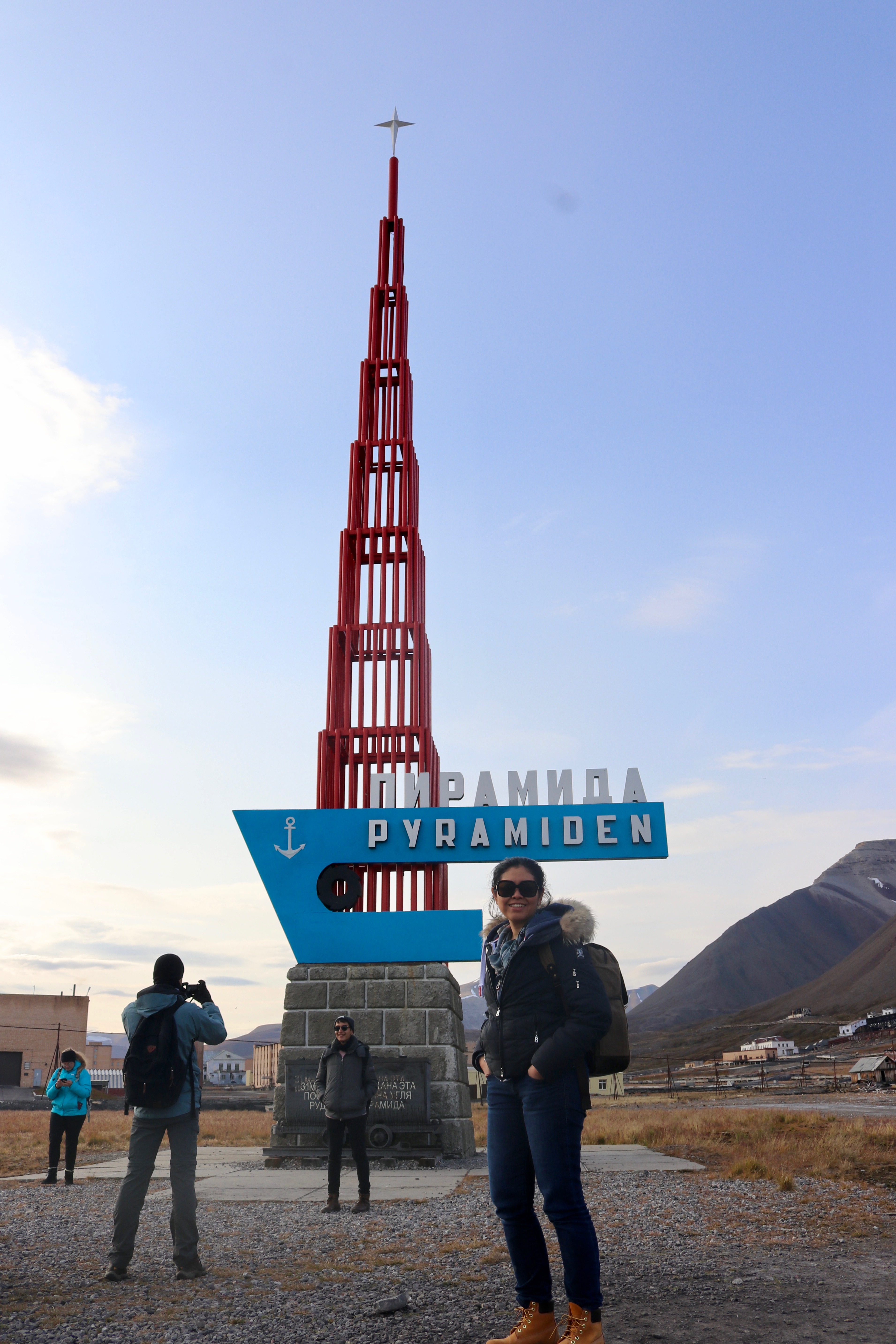
Here is also where the “last coal” extracted on March 31, 1998 was symbolically placed. Throughout the years, tourist have taken some back home as souvenirs. As there are bucket load of coal in Pyramiden, the guides allow this to happen and merely top up the cart when needed.
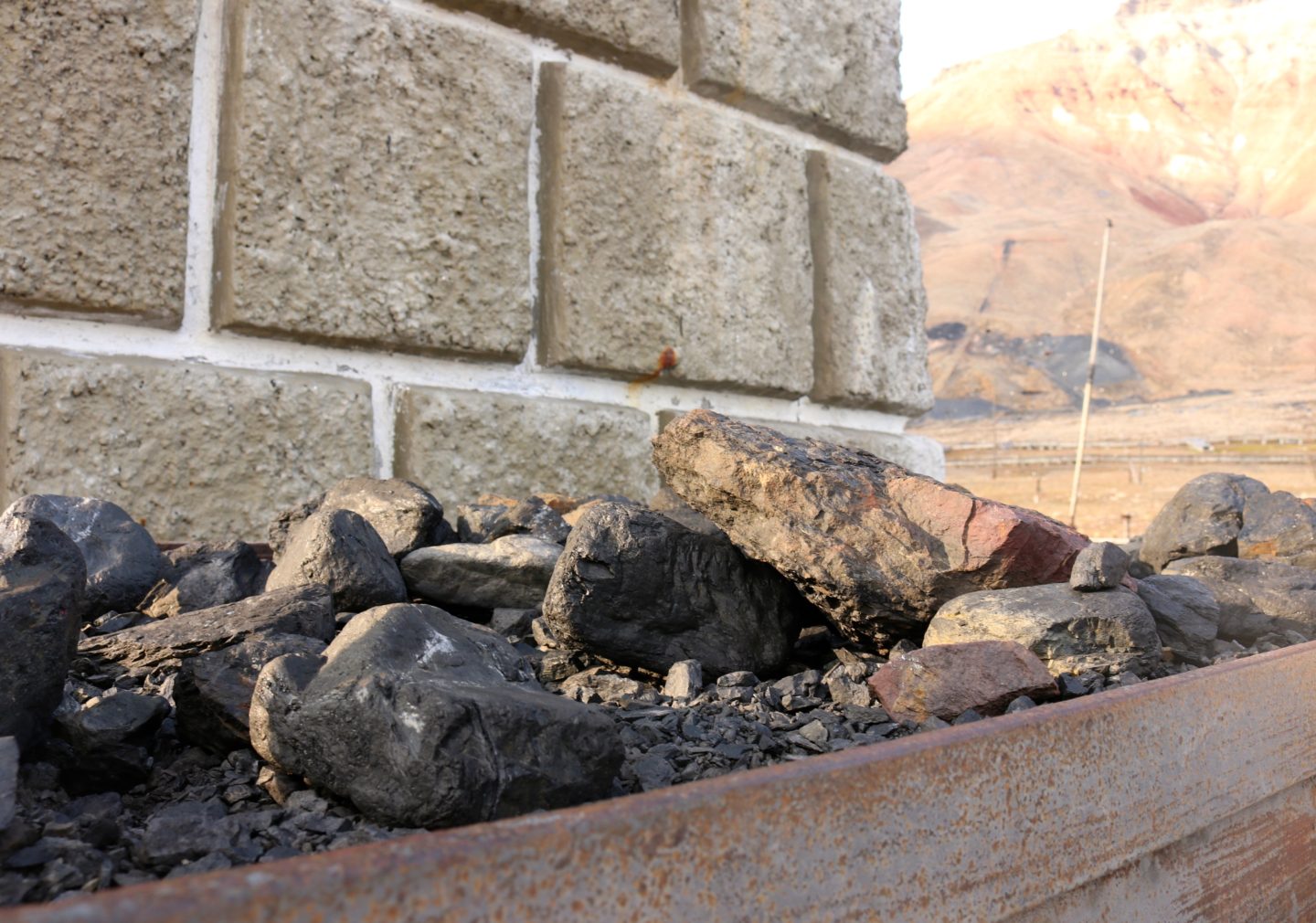
From there, we walked to the town centre. We soon felt like we just stepped back into the Soviet era.
Because of the cold climate, things in Pyramiden are preserved well. The place was vandalised during the period when it was totally abandoned. In 2007, a handful of people were sent to Pyramiden to help with the upkeep of the place. On the day we arrived, there were seven in total, including our guide.
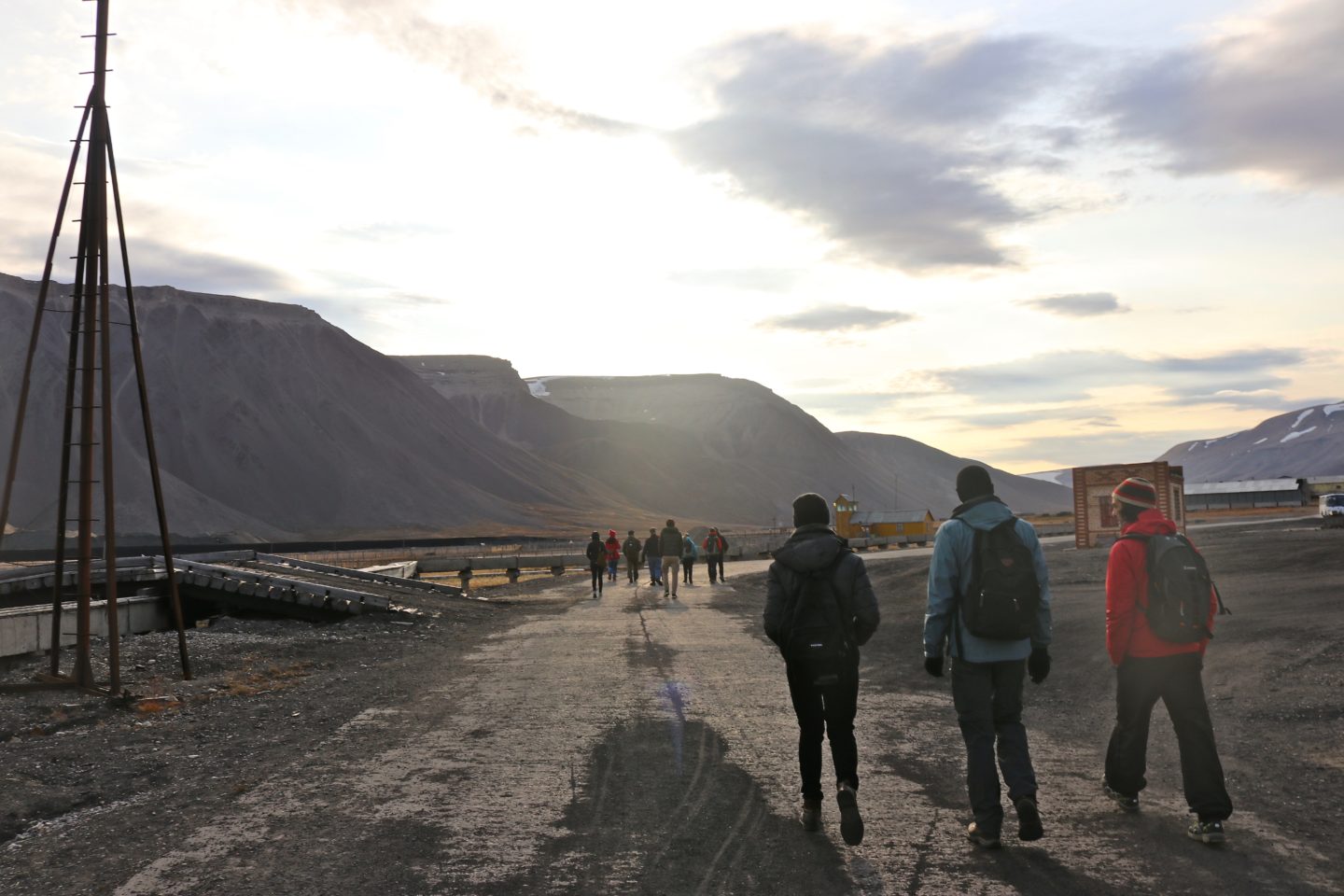
In its days, Pyramiden was almost self sufficient. Power was generated from the coal they mined.
They also had a farm and green house from where vegetables are harvested and rear cattle and pigs for meat.
From far, we could see the coal mines. On one of the hillside, part of the slogan Mir Miru Mir, meaning “world peace” is still evident.
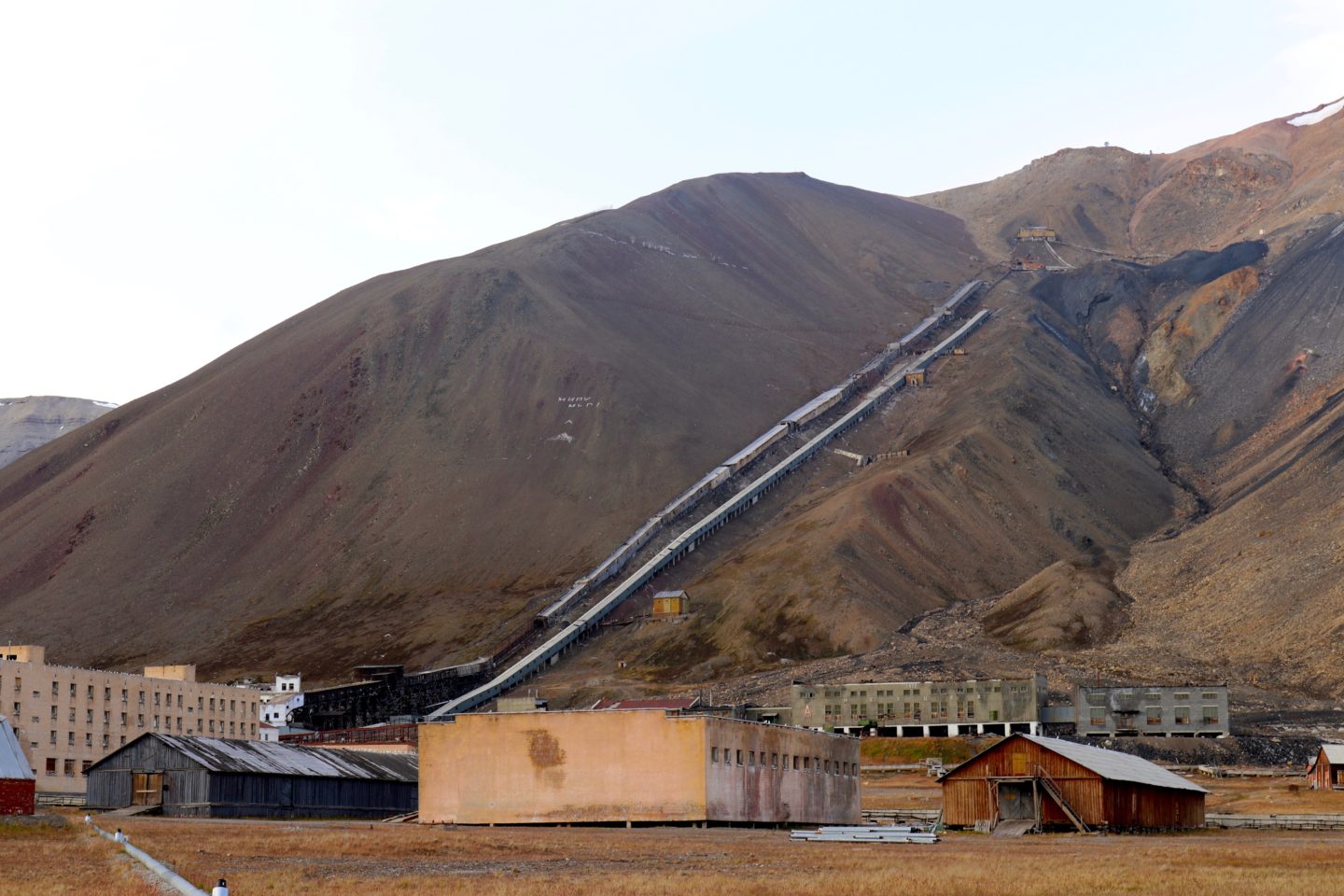
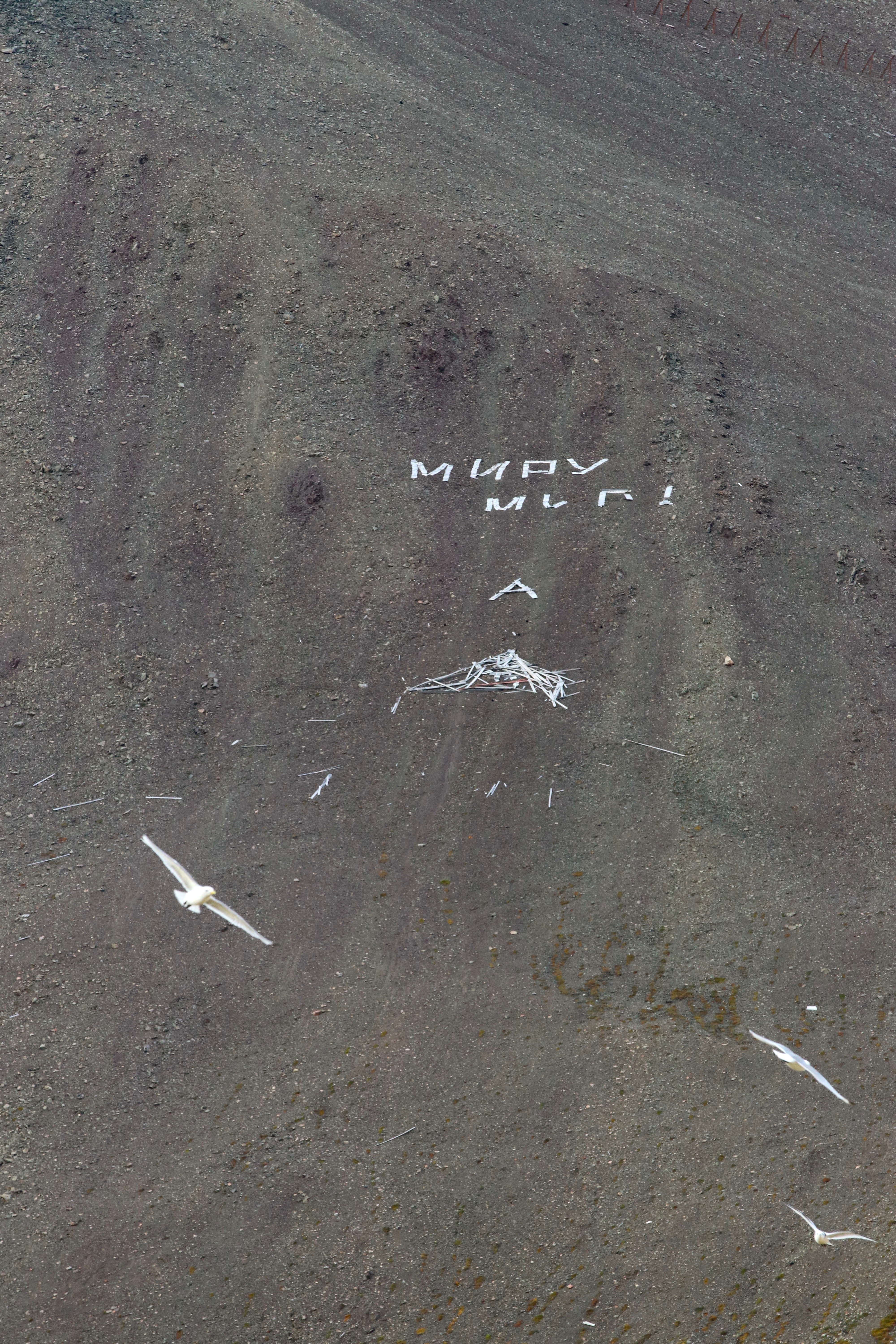
Residents were assigned different living quarters which soon had their own nicknames. The Mad House was the block for those with families. It got its name because there was always children running and playing in the hallway. Nowadays, the Mad House looks no less crazy with kittiwakes occupying each windowsill.
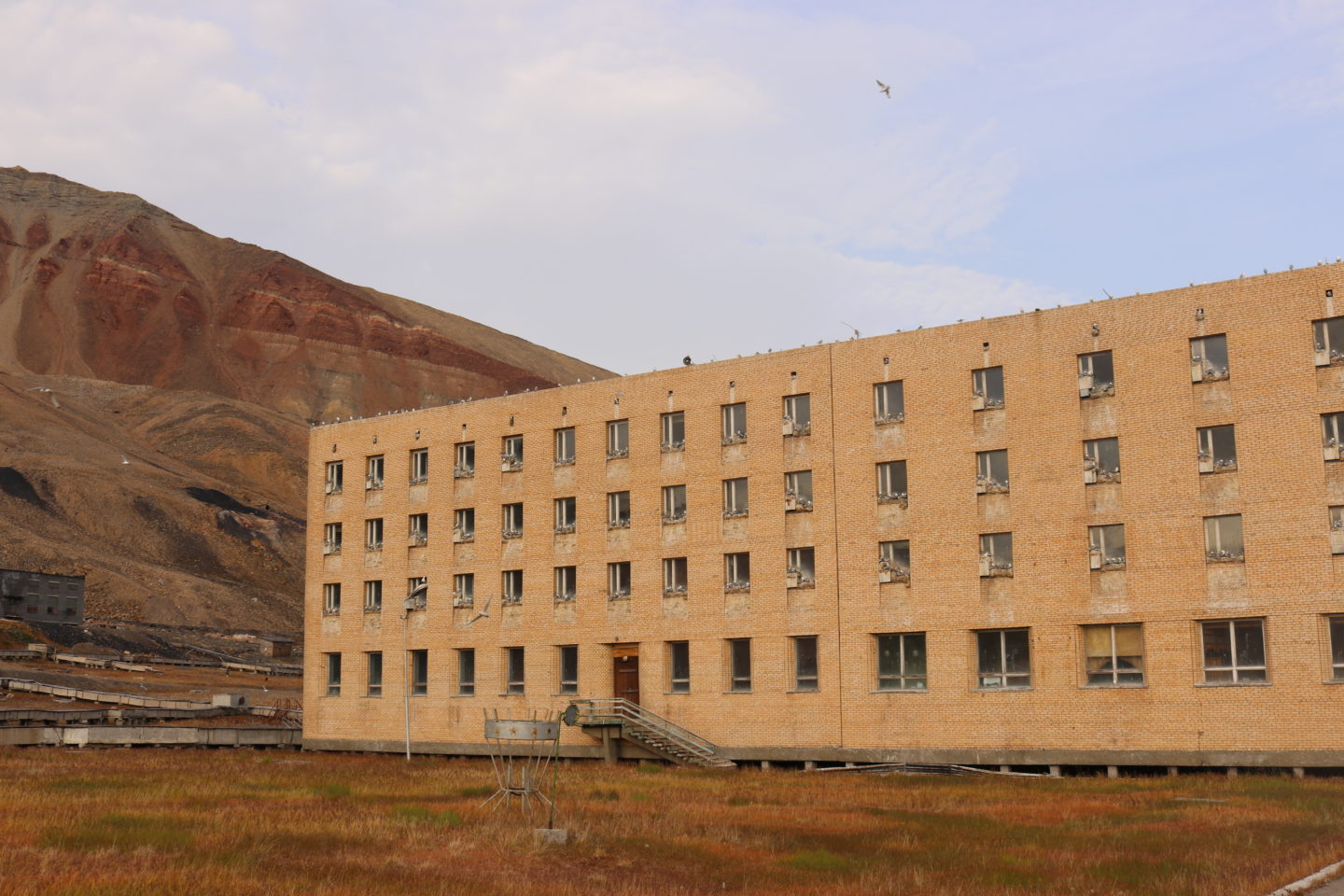
The scene similar to the picture below can be seen at every single window sill of this block.
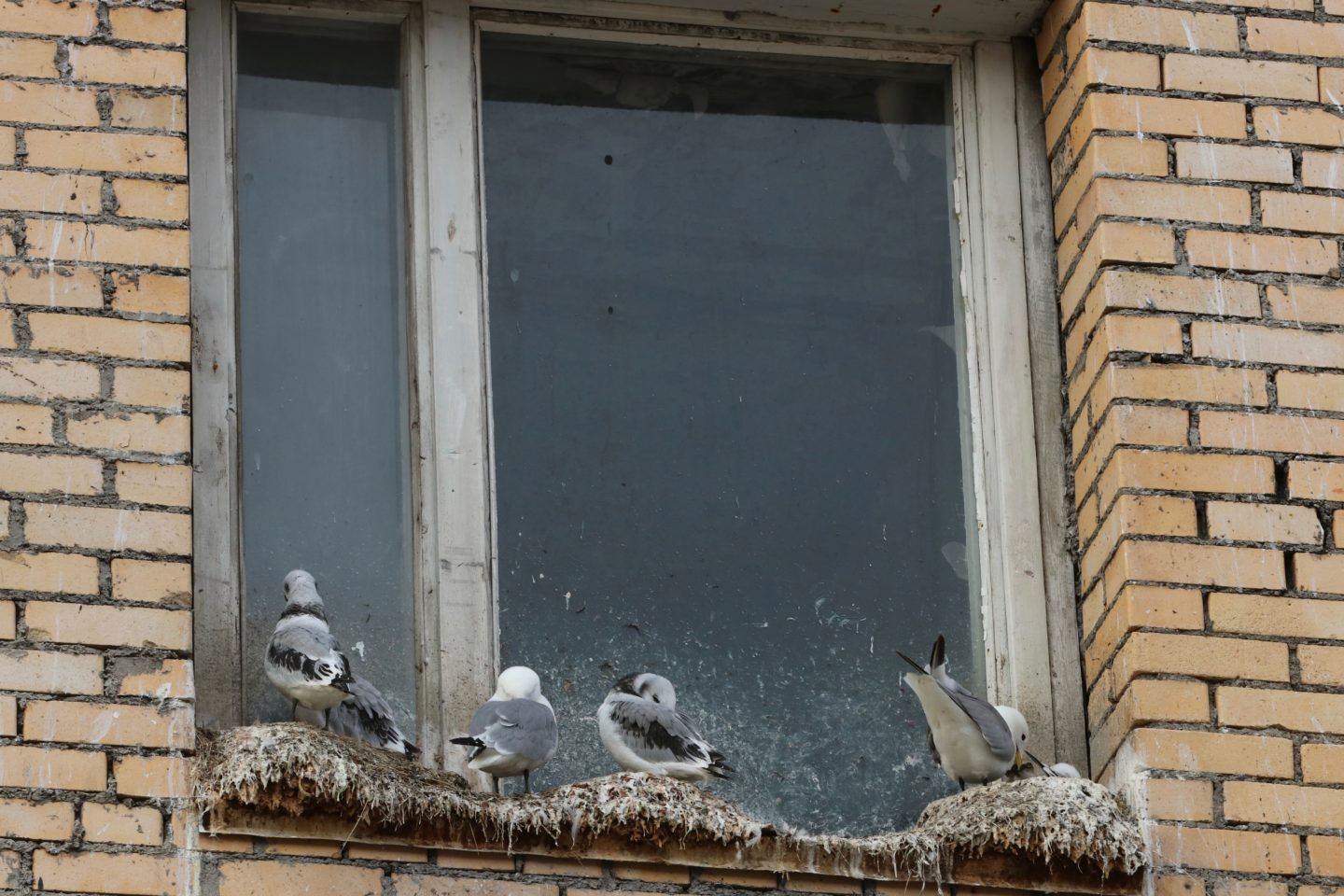
For residents who are single, London is the block for males and Paris, for the ladies. It was rumoured that there is a secret passageway connecting the two blocks. This passsageway has never been found to this day.
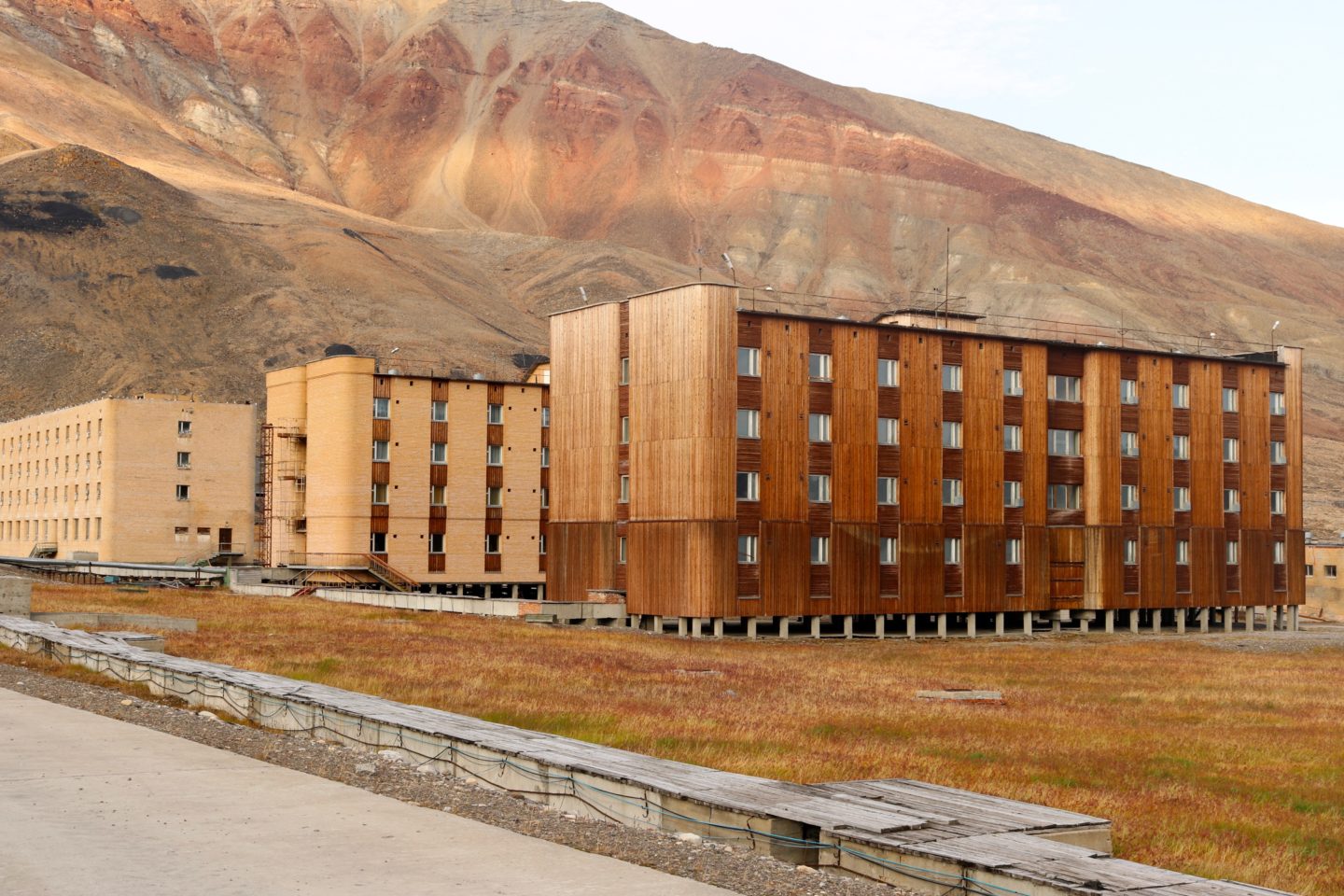
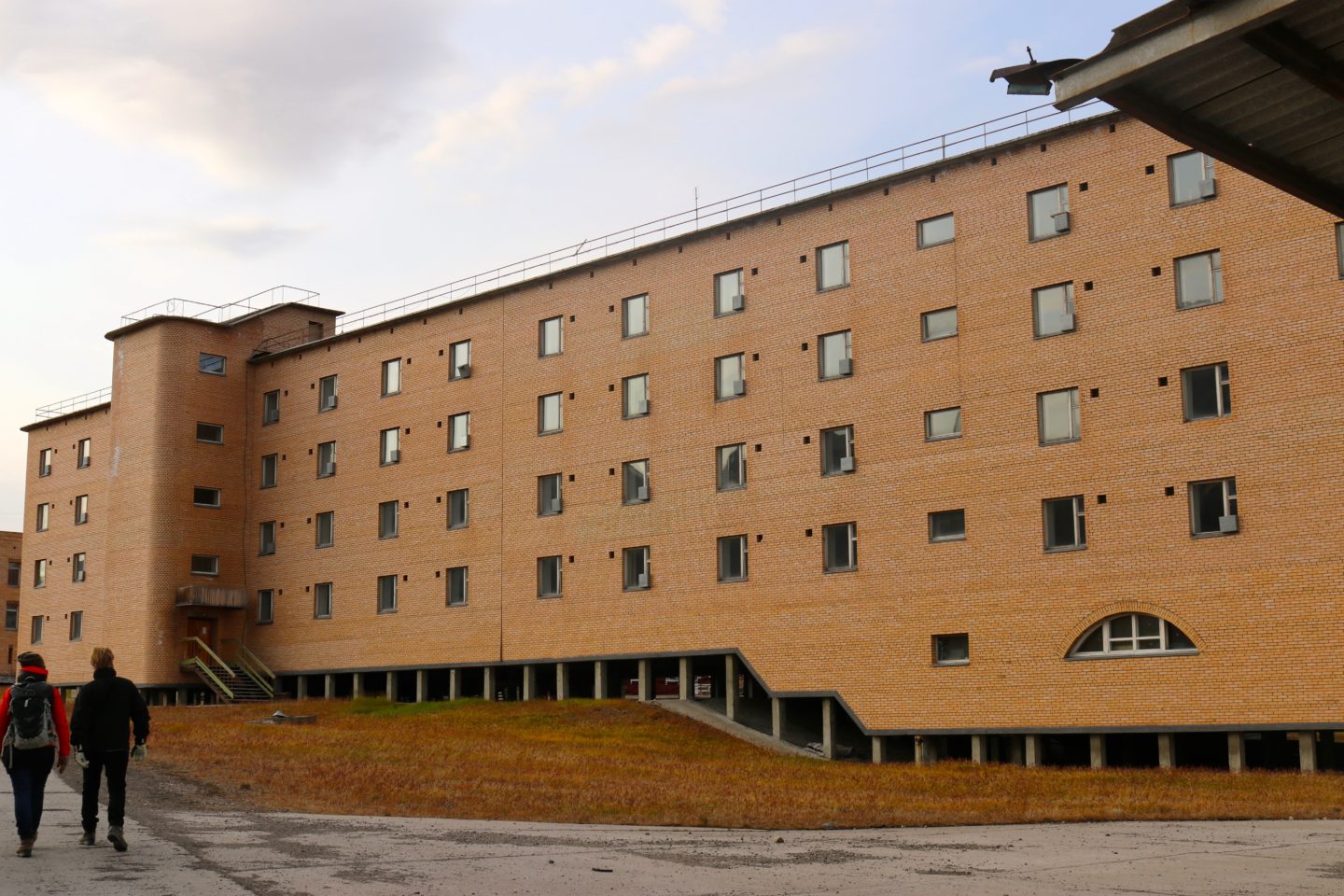
Next, we passed by the hospital. We were told that since being deserted, no one has entered the building – again, Moscow’s orders.
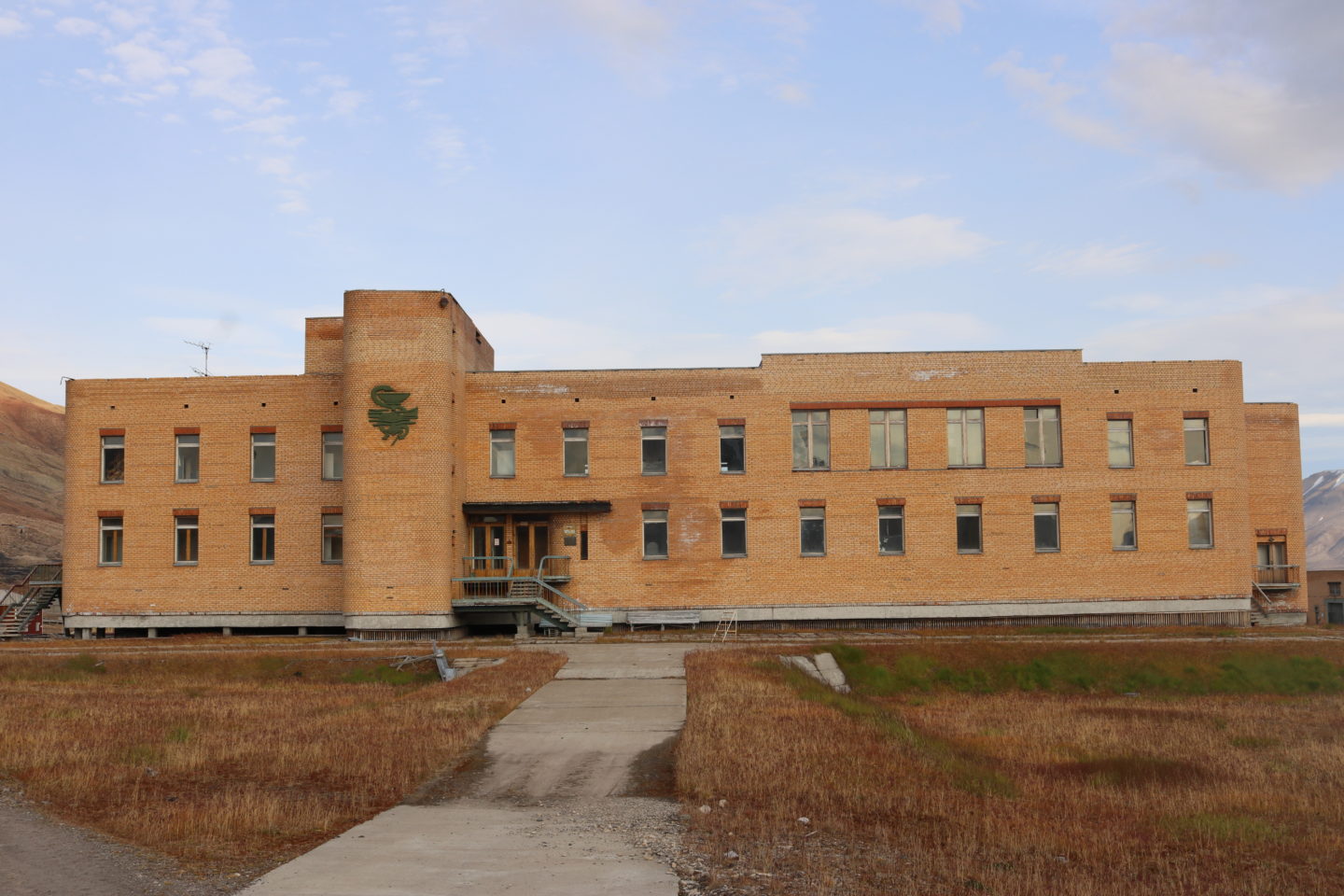
The Cultural Palace is a very prominent building located at the top of the town square. The centre housed a library, a dance hall, basket ball court, music rooms and ballet studios. There is also an auditorium equipped for live performances and screening movies. As I entered each room, I tried to imagine how the place was like in its glory days.
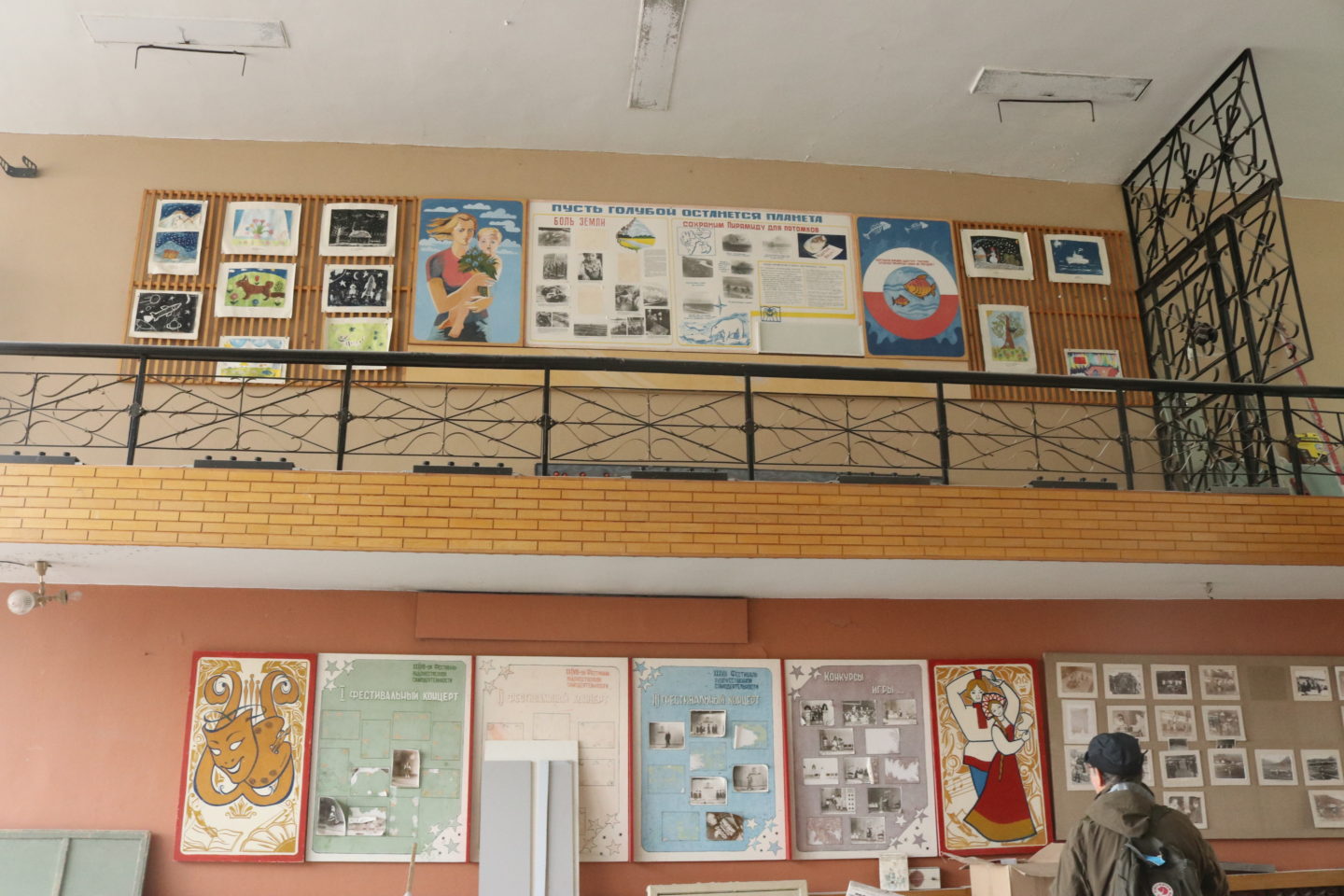
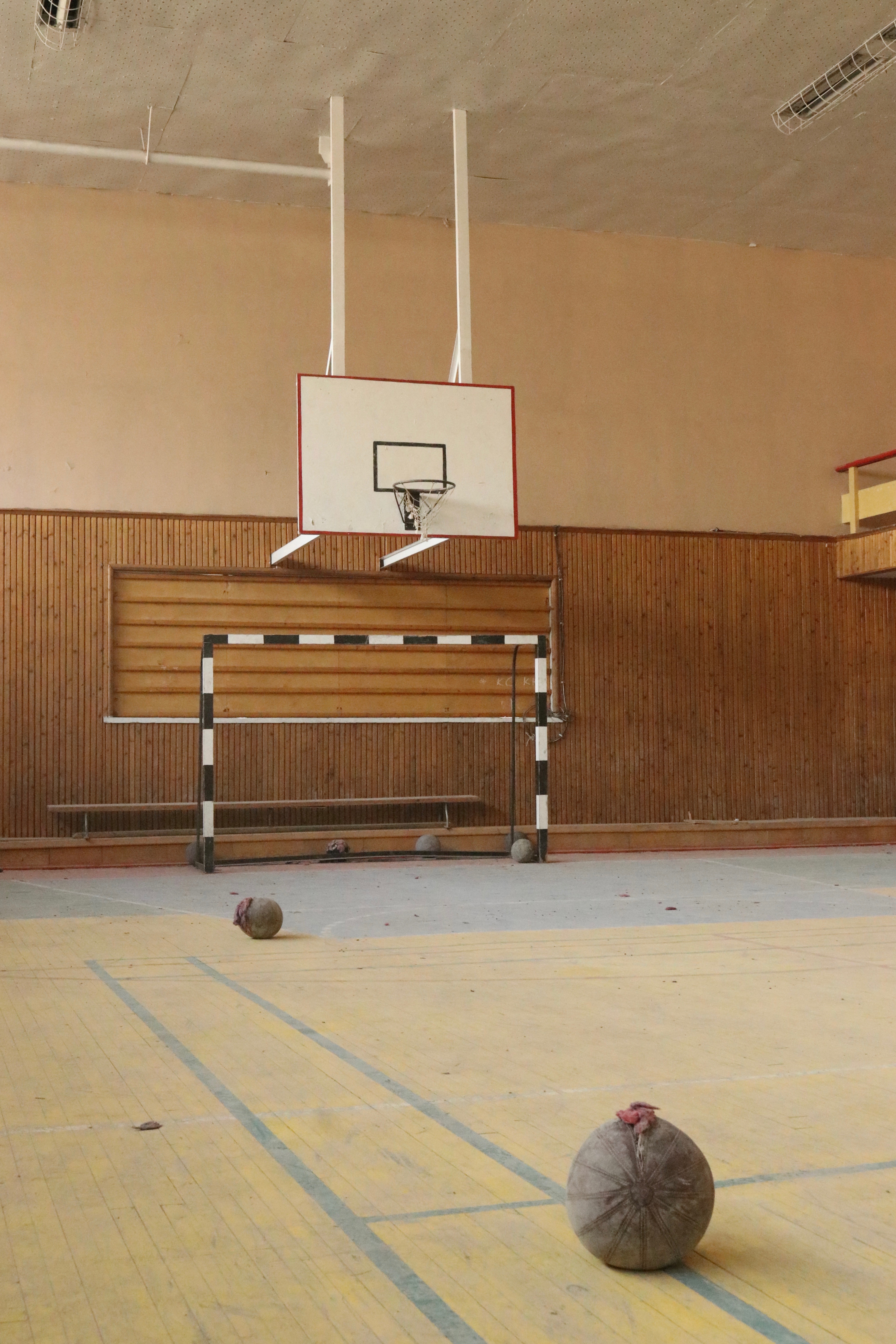
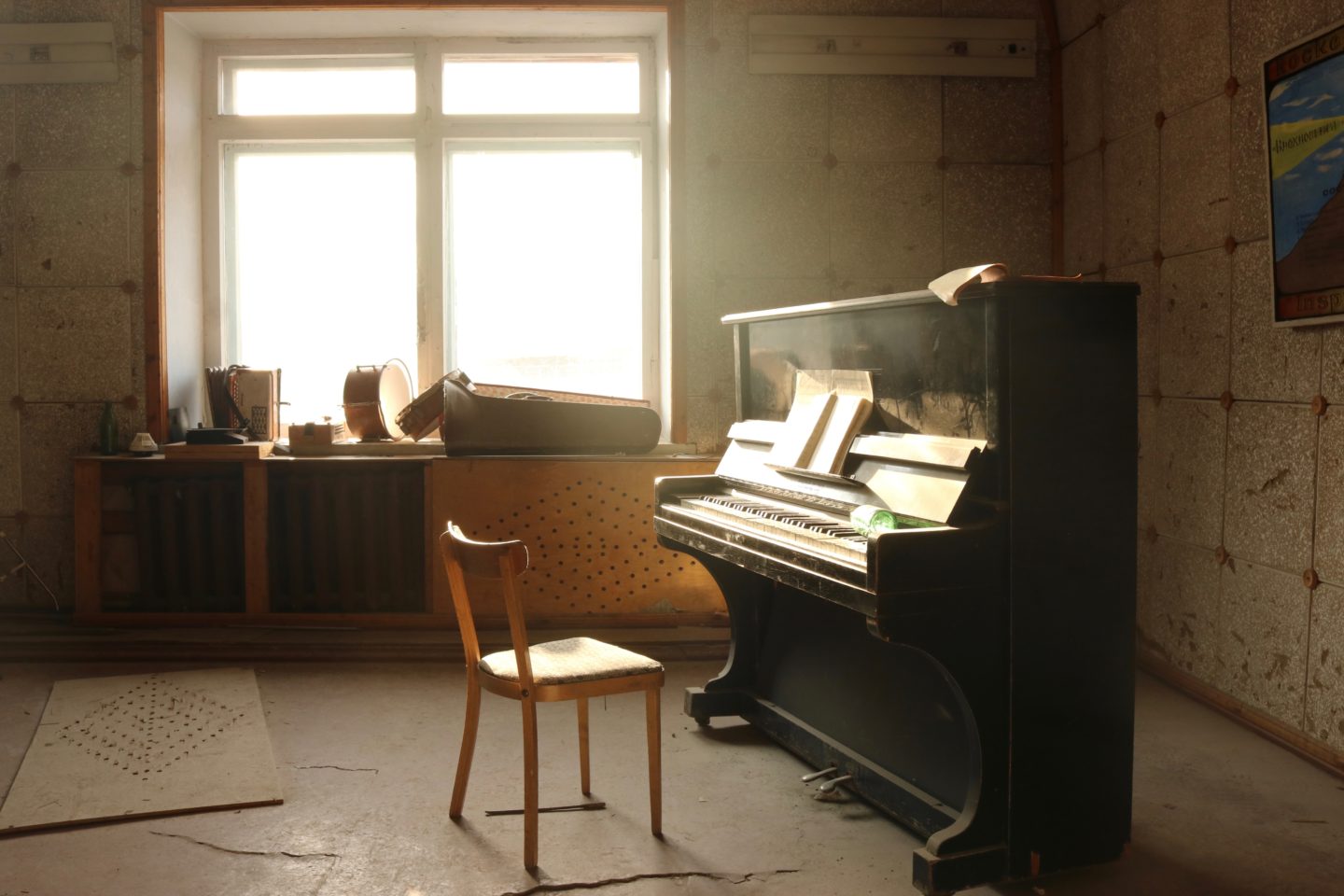
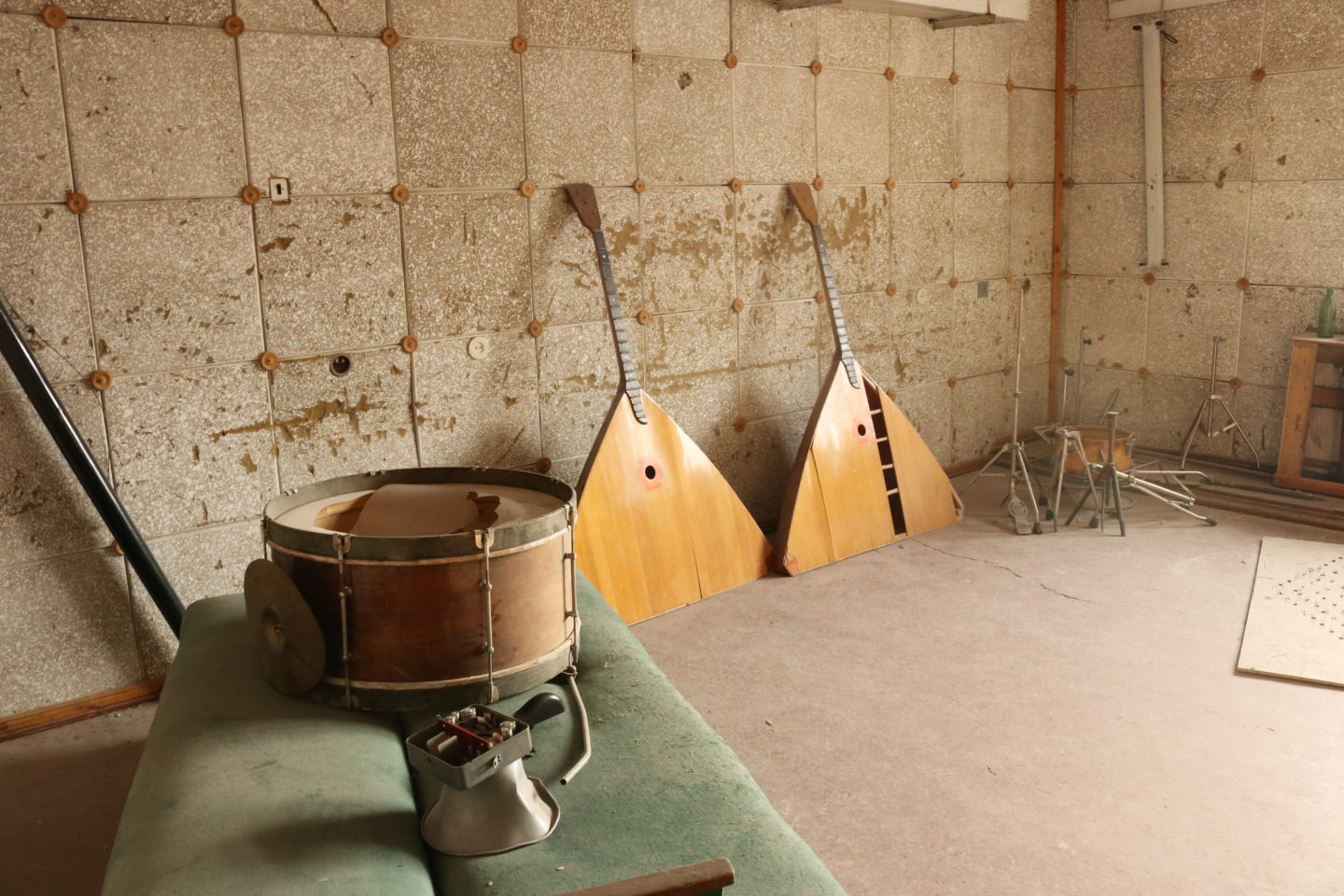
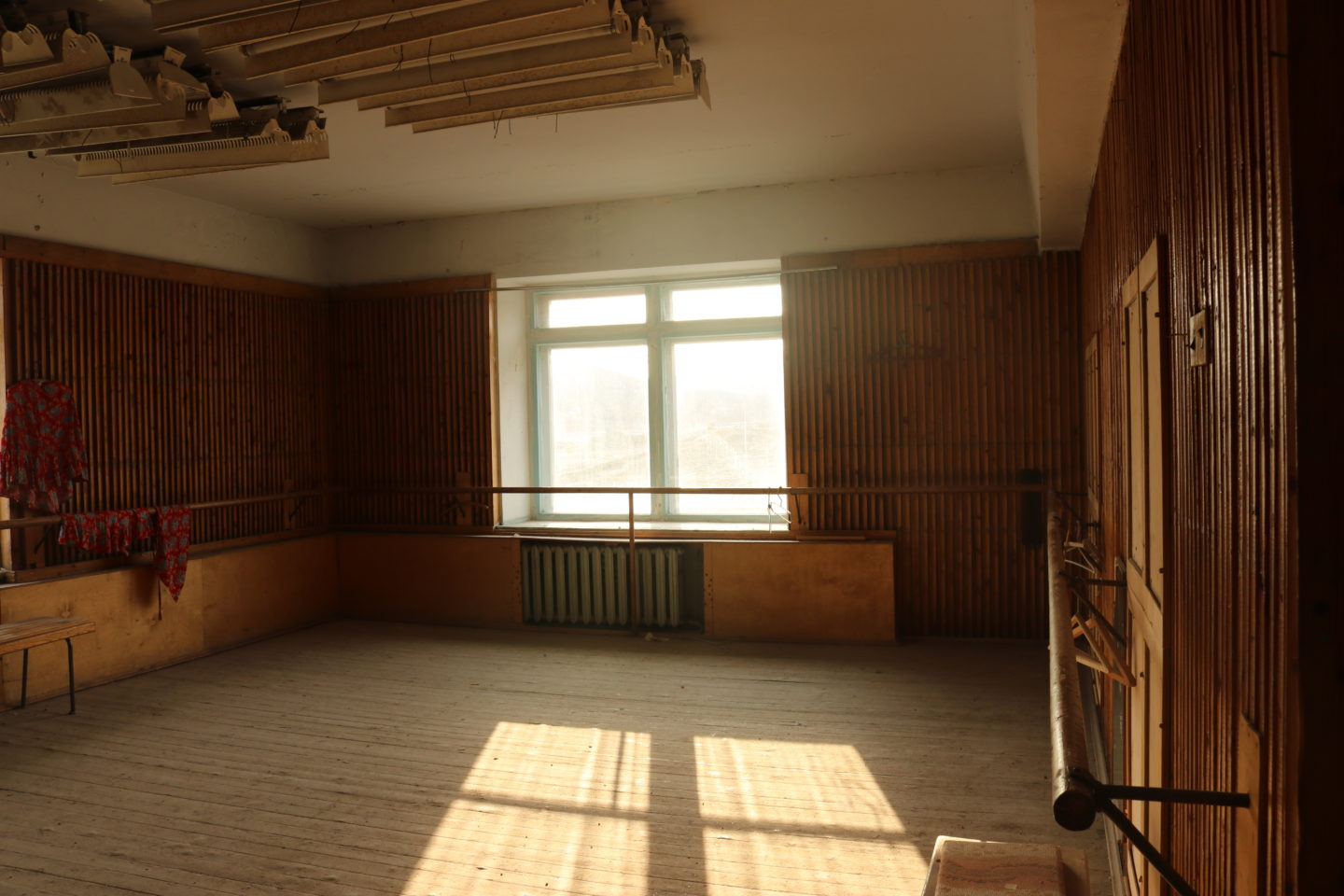
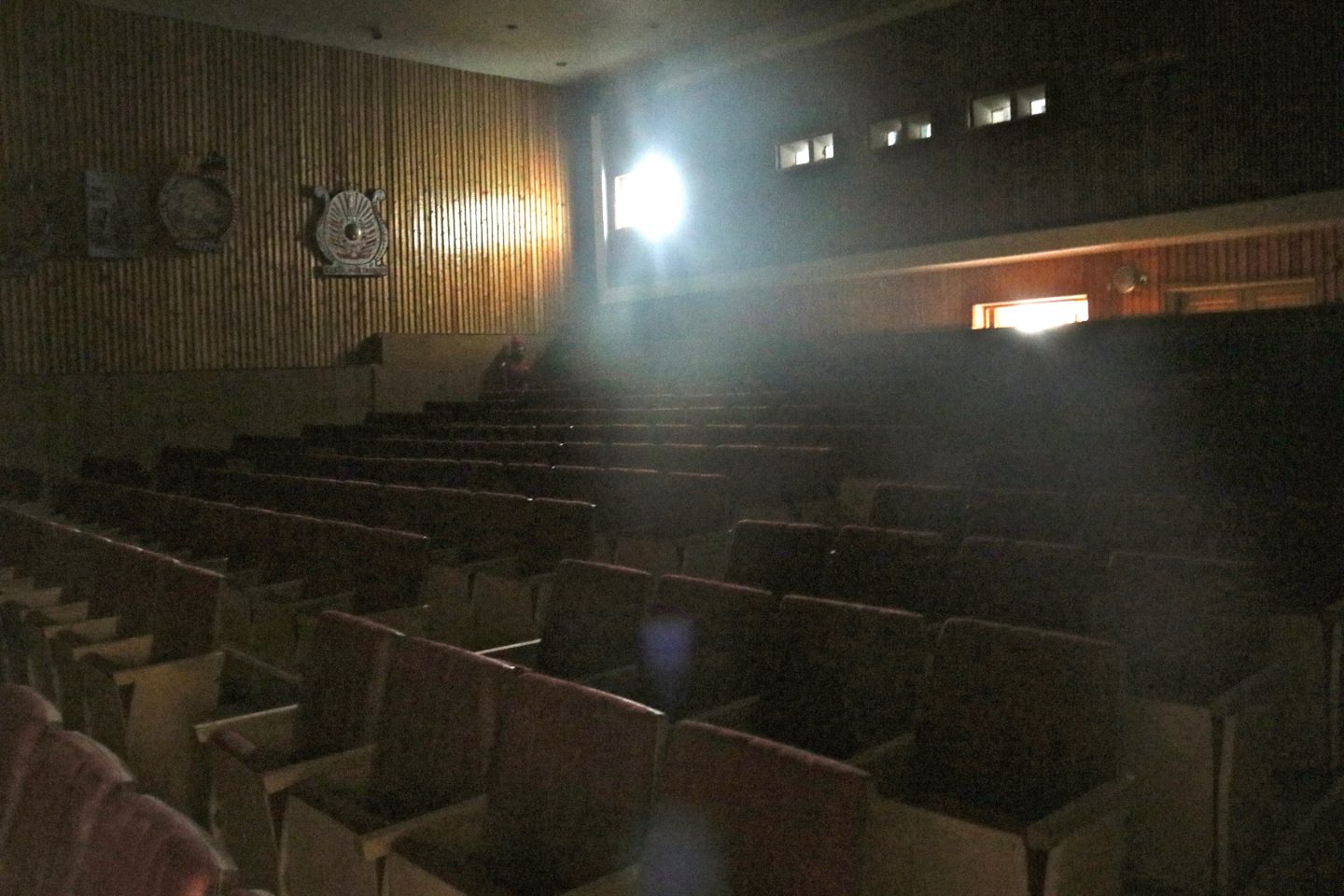
Adjecent to the Cultural Palace is the Yuri Gagarin Sports Centre which housed an aquatic centre. It has an indoor heated swimming pool! In those days, that was really something. We were told it also has an indoor firing range and a football stadium.
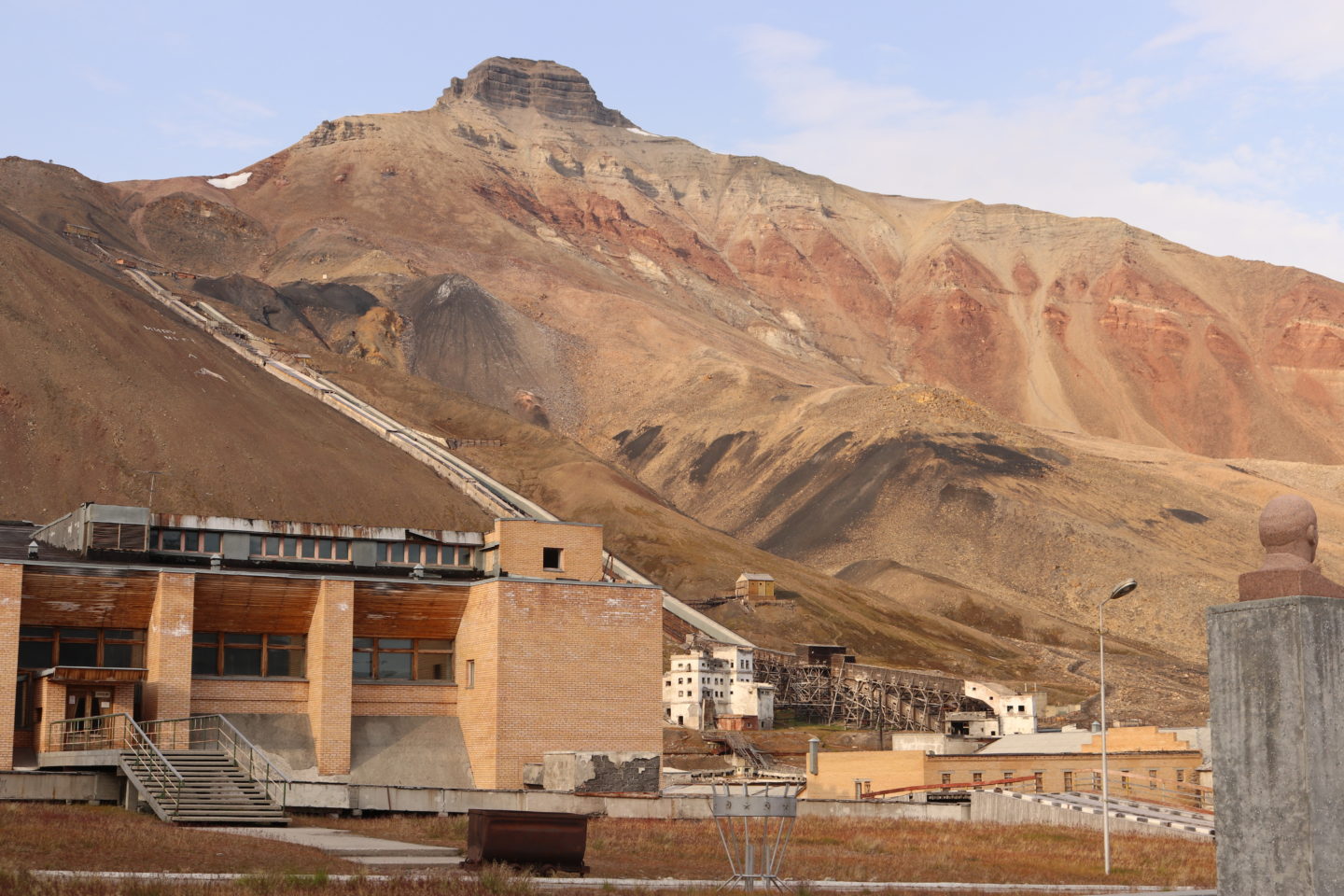
In front of the Cultural Palace, the bust of Lenin stood tall and proud. Lenin definitely has the best view of the town and beyond!

As there are no kitchen in the living quarters, everyone takes their meals at the large canteen. Like everything else in this town, meals came free for the town’s residents.
Inside, there is also an impressive mosaic picture depicting life in Svalbard.
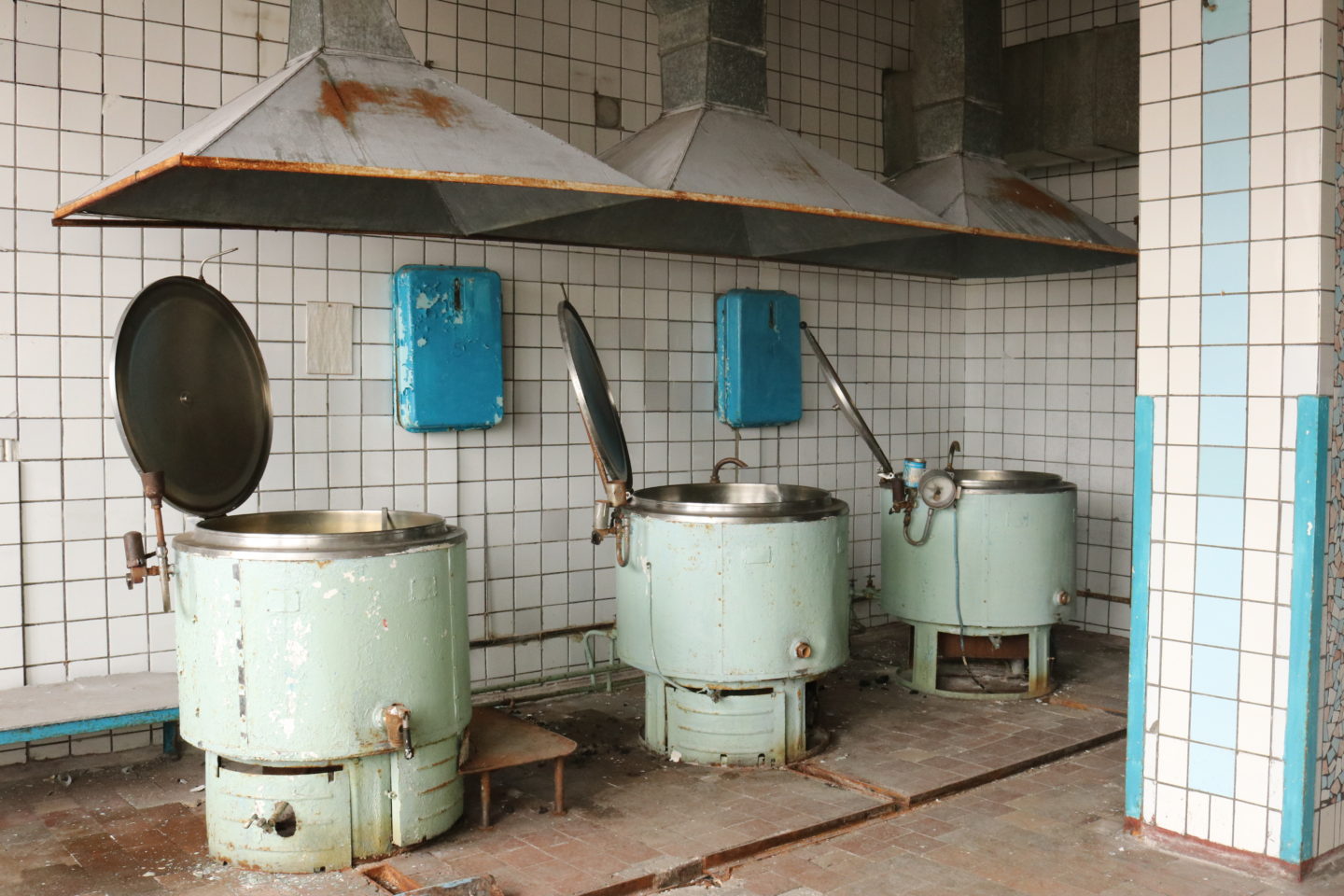
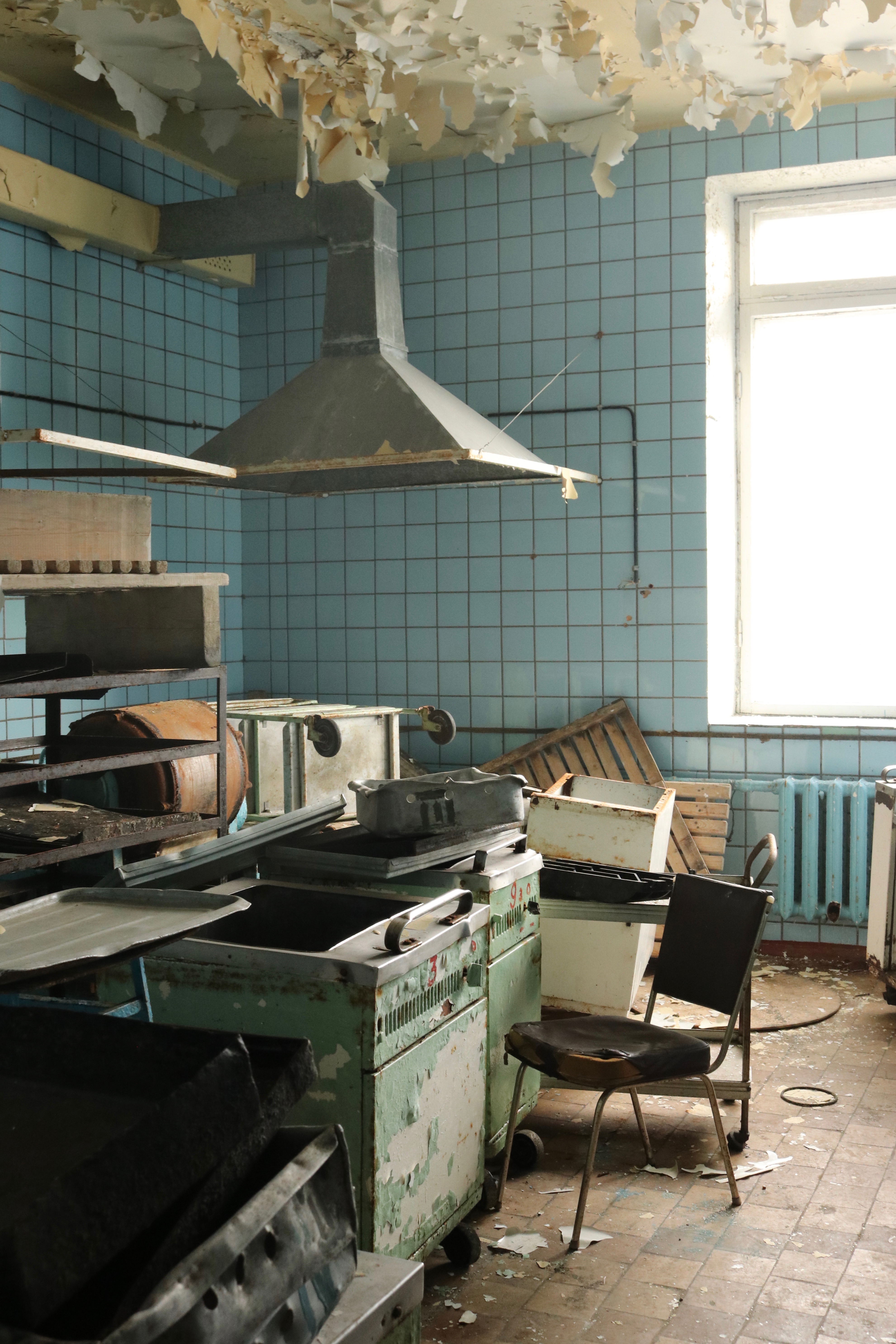
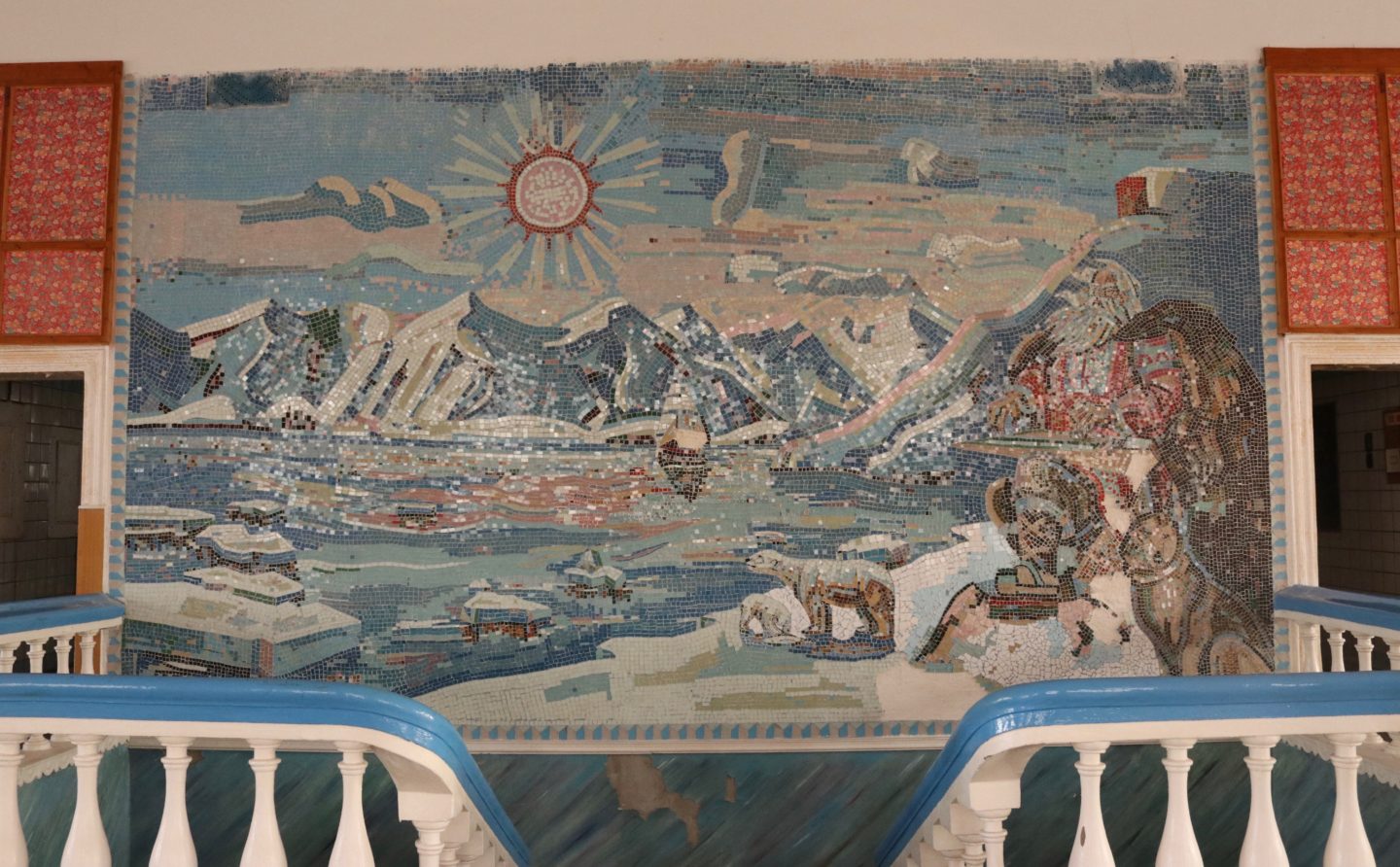
Below was what used to be the administration building.
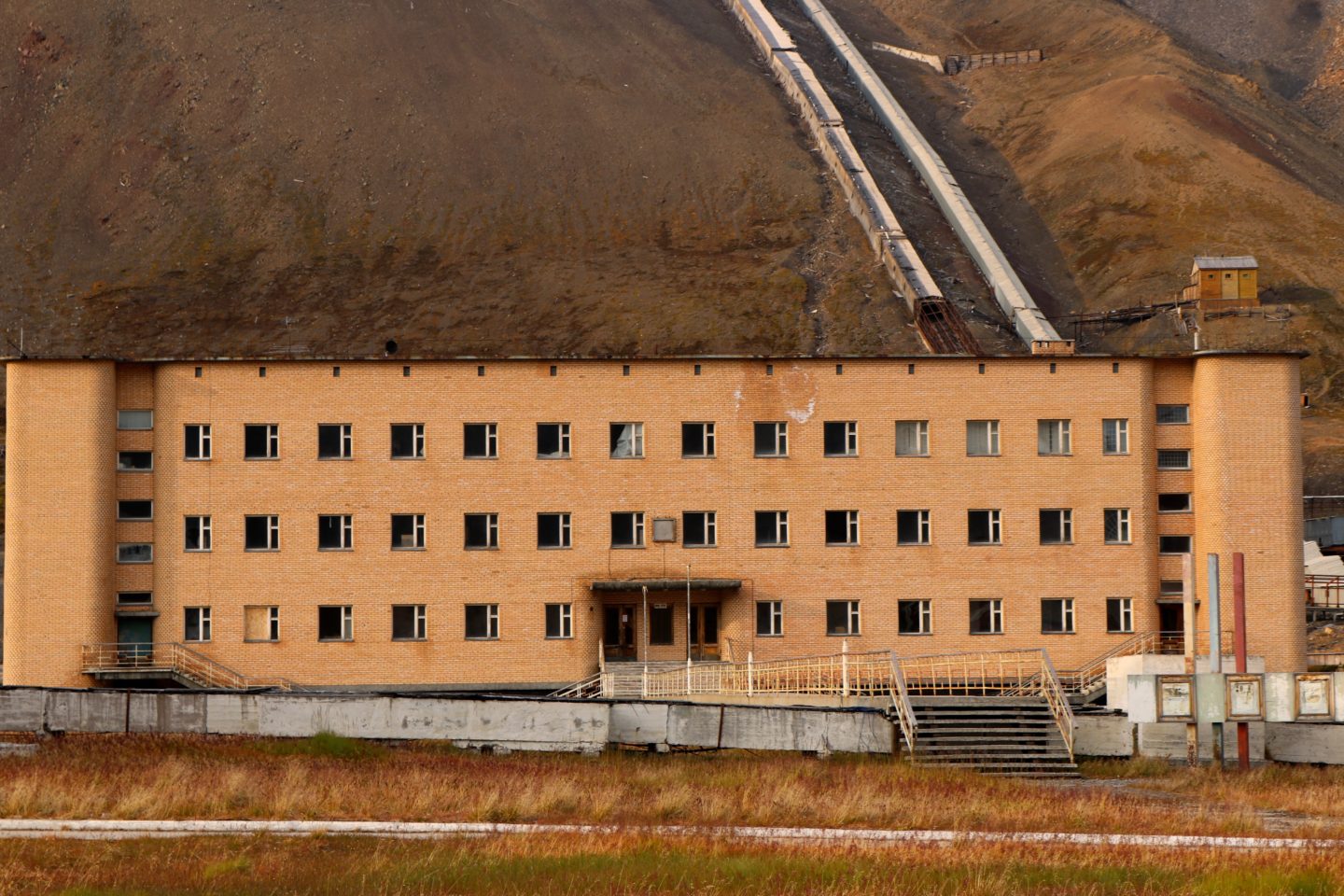
The last building we entered was the Tulip hotel which has been re-opened and visitors can opt to stay for a few nights in the summer months. Rooms offered are the “modern” rooms or the “Soviet-style” rooms – the later without an ensuite bathroom.
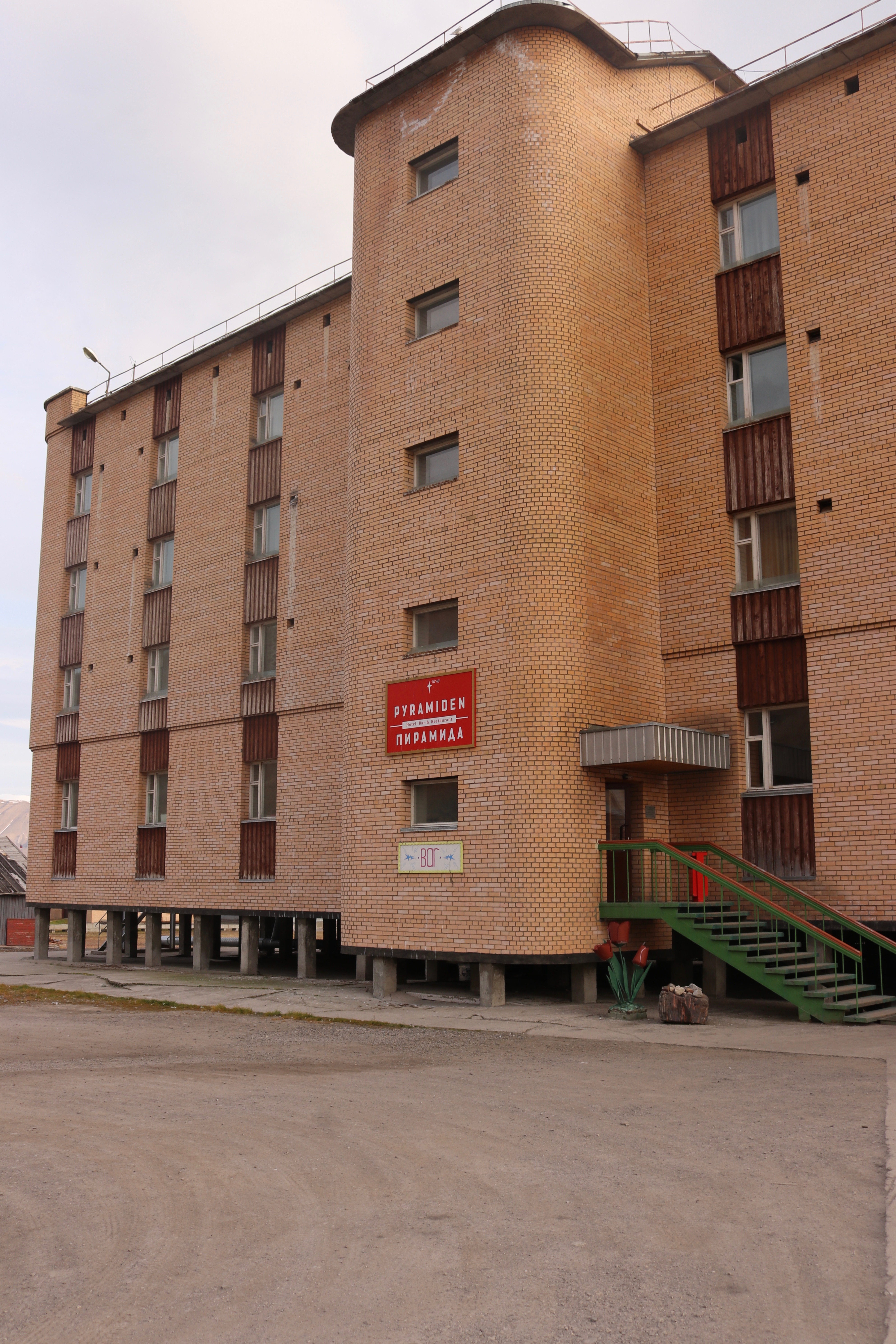
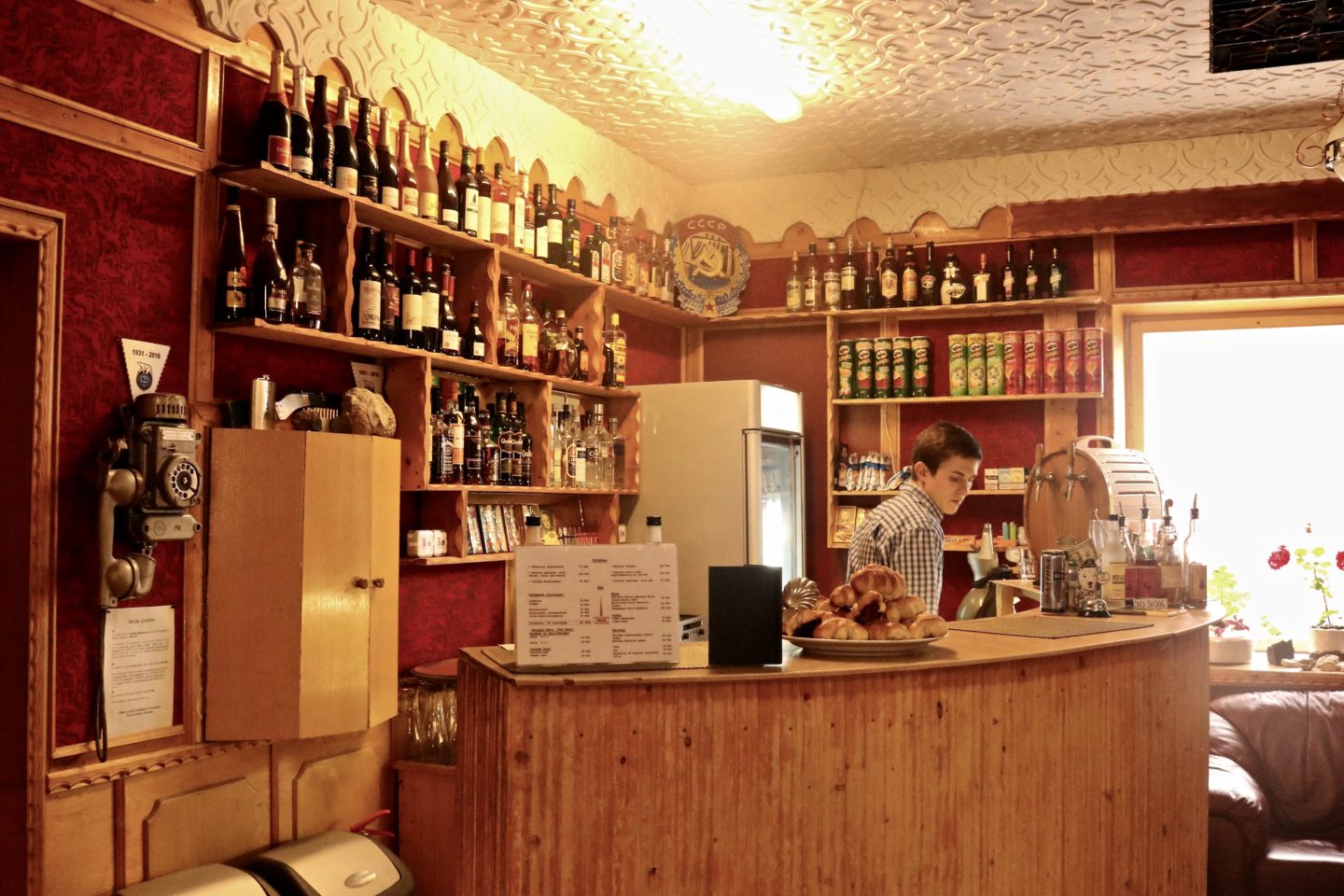
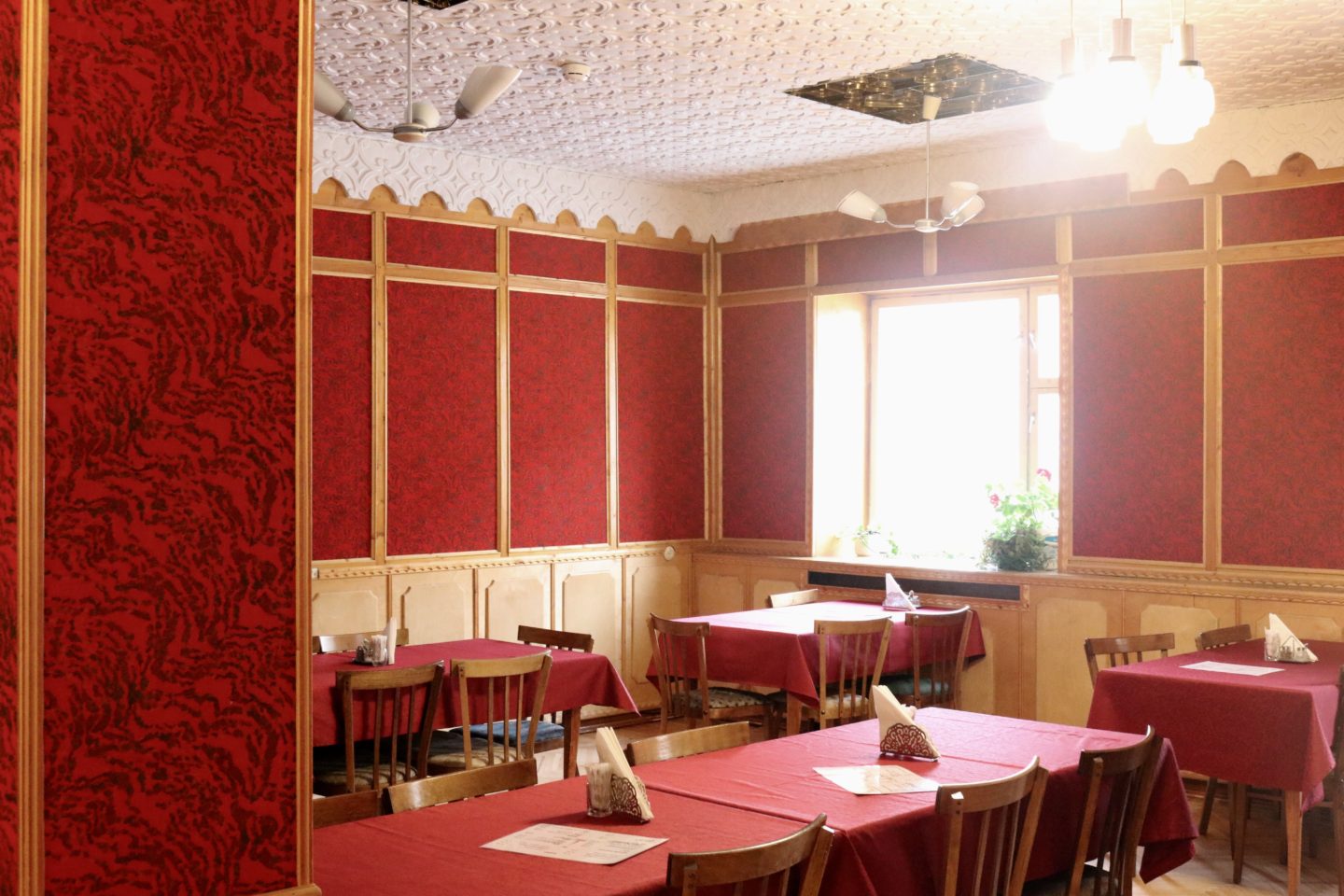
There is a small souvenir shop that sells handicrafts by ladies from Barentsburg (the only other Russian mining town in Svalbard which unlike Pyramiden is still operating to this day). If you come to Pyramiden, don’t forget to bring your passport. You can stamp your passport with a Pyramiden stamp and whilst useless, it makes a great memento.
Our two hours at Pyramiden passed by quickly and soon it was time to leave. Pyramiden was definitely one of the most unique places I’ve been to. As I was leaving the town, my only regret was not being able to stay there for a day or two – but I’m still grateful that I made it this far.
